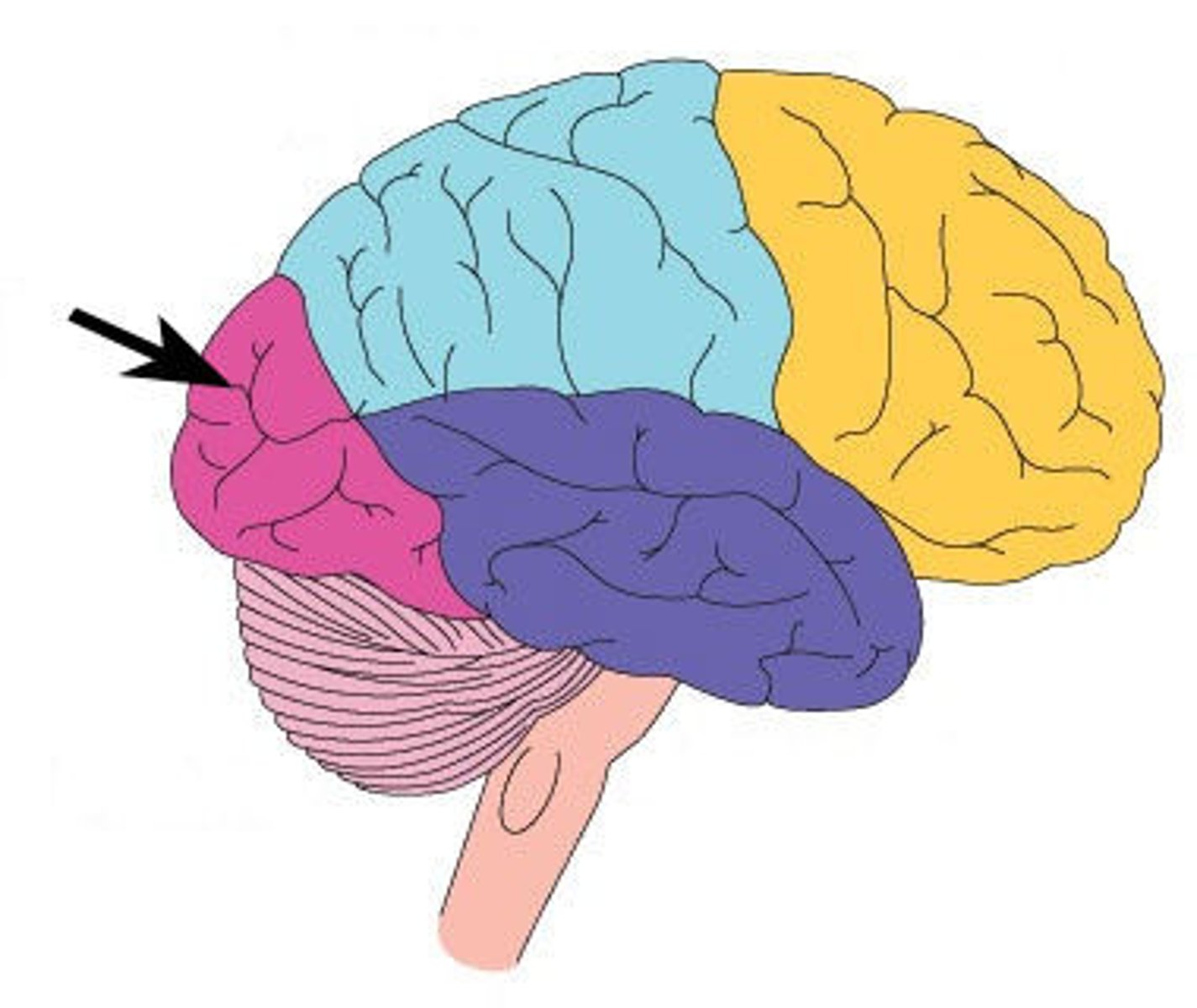Neuroanatomy of the Brain: Structures, Functions, and Pathways
1/42
There's no tags or description
Looks like no tags are added yet.
Name | Mastery | Learn | Test | Matching | Spaced |
|---|
No study sessions yet.
43 Terms
Cerebrum
Largest part of the brain; responsible for thinking, learning, emotion, sensory processing, and voluntary movement.
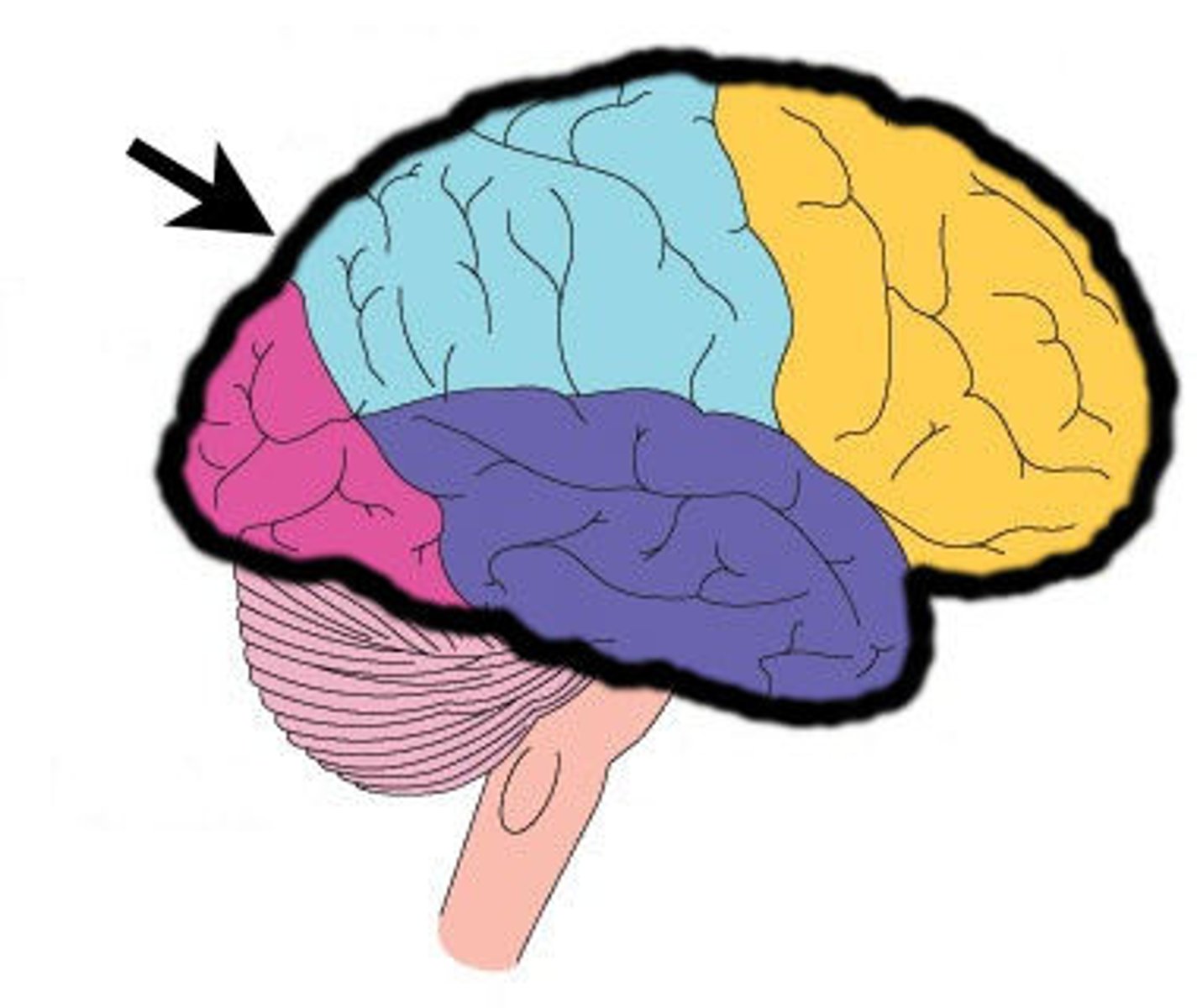
Cerebellum
Located under the cerebrum at the back of the brain; coordinates balance, posture, and fine motor control.
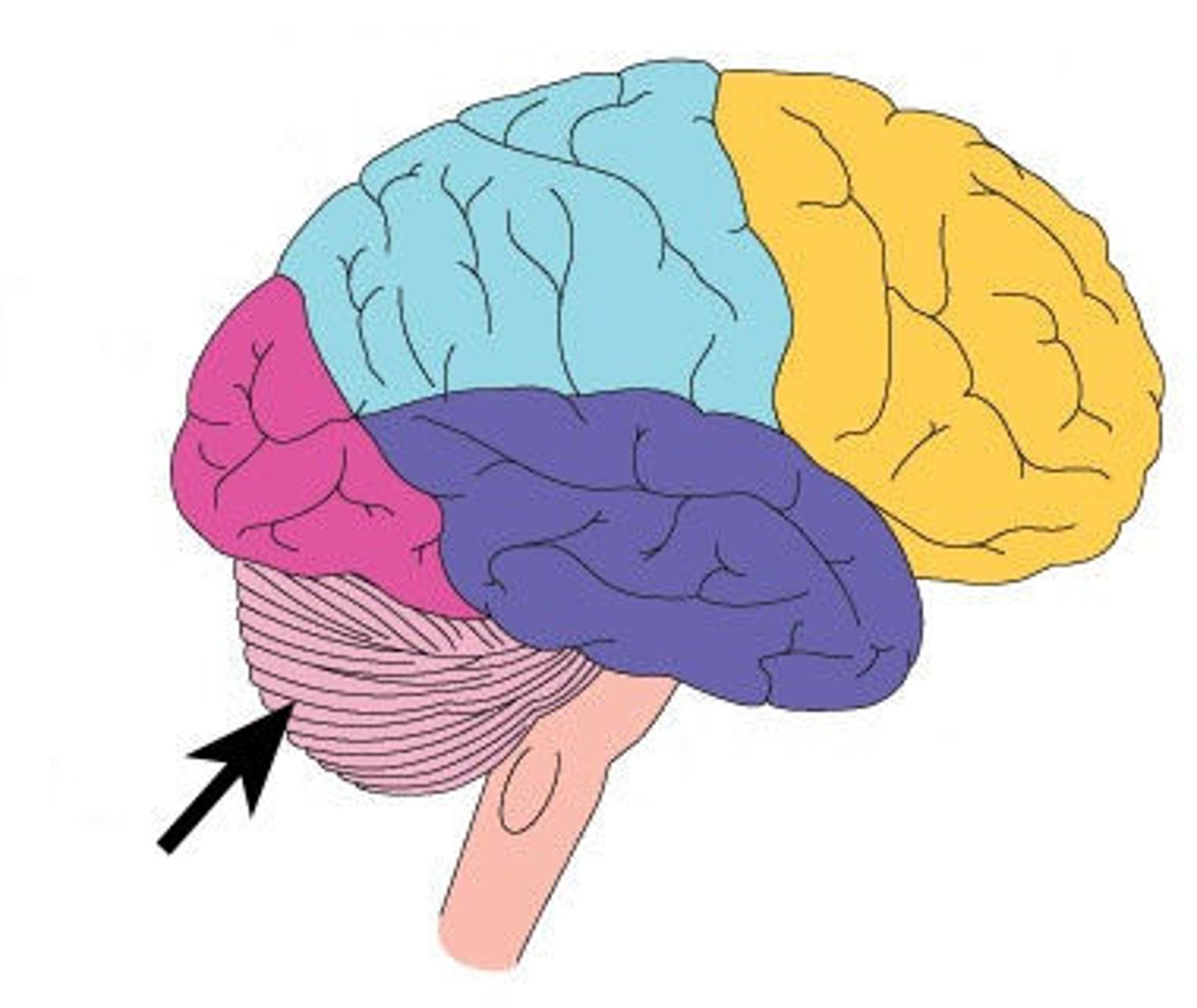
Spinal Cord
Connects brain to the rest of the body; transmits nerve signals between brain and body.
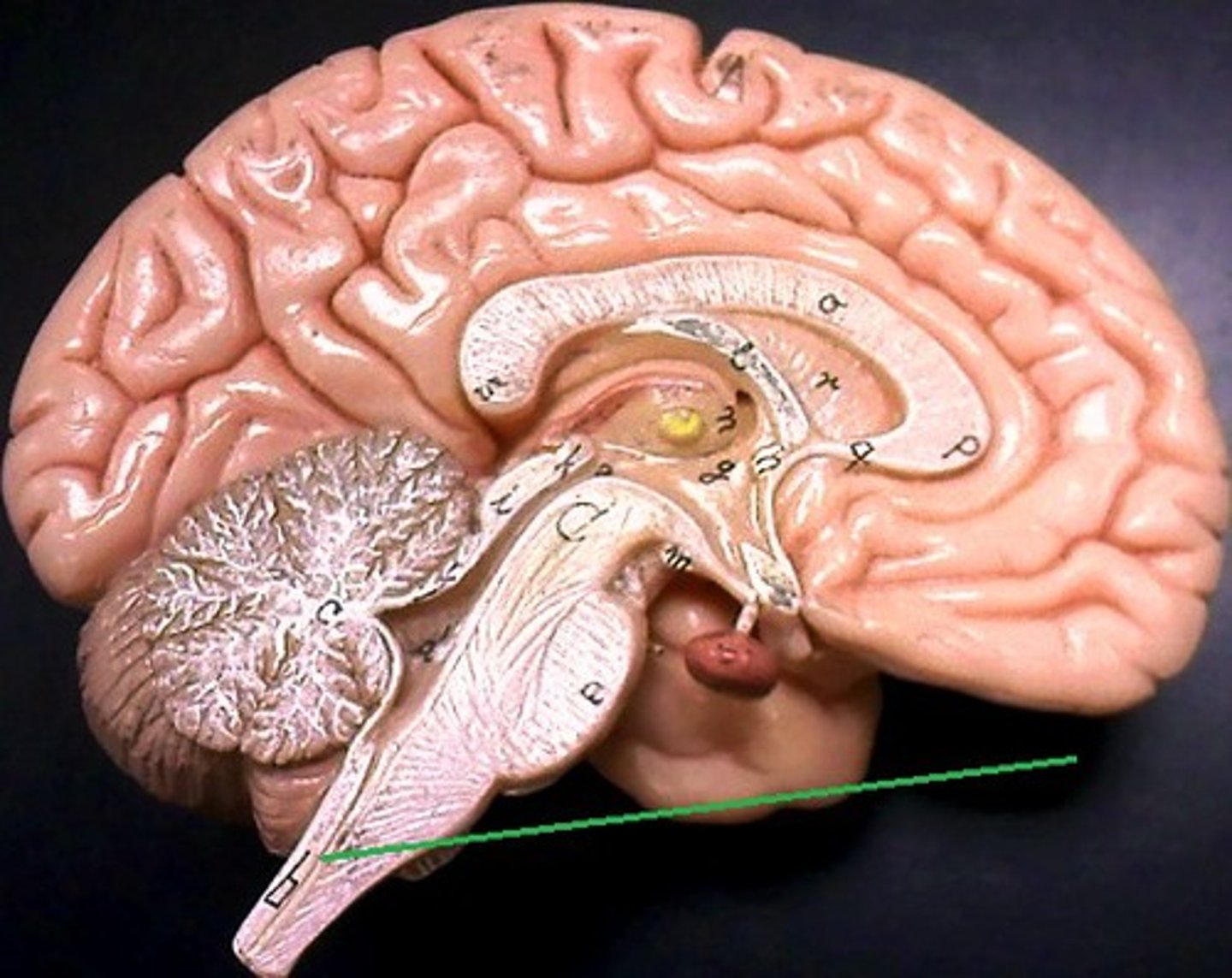
Medulla Oblongata
Lowest part of brainstem; controls vital functions like heart rate, breathing, and blood pressure.
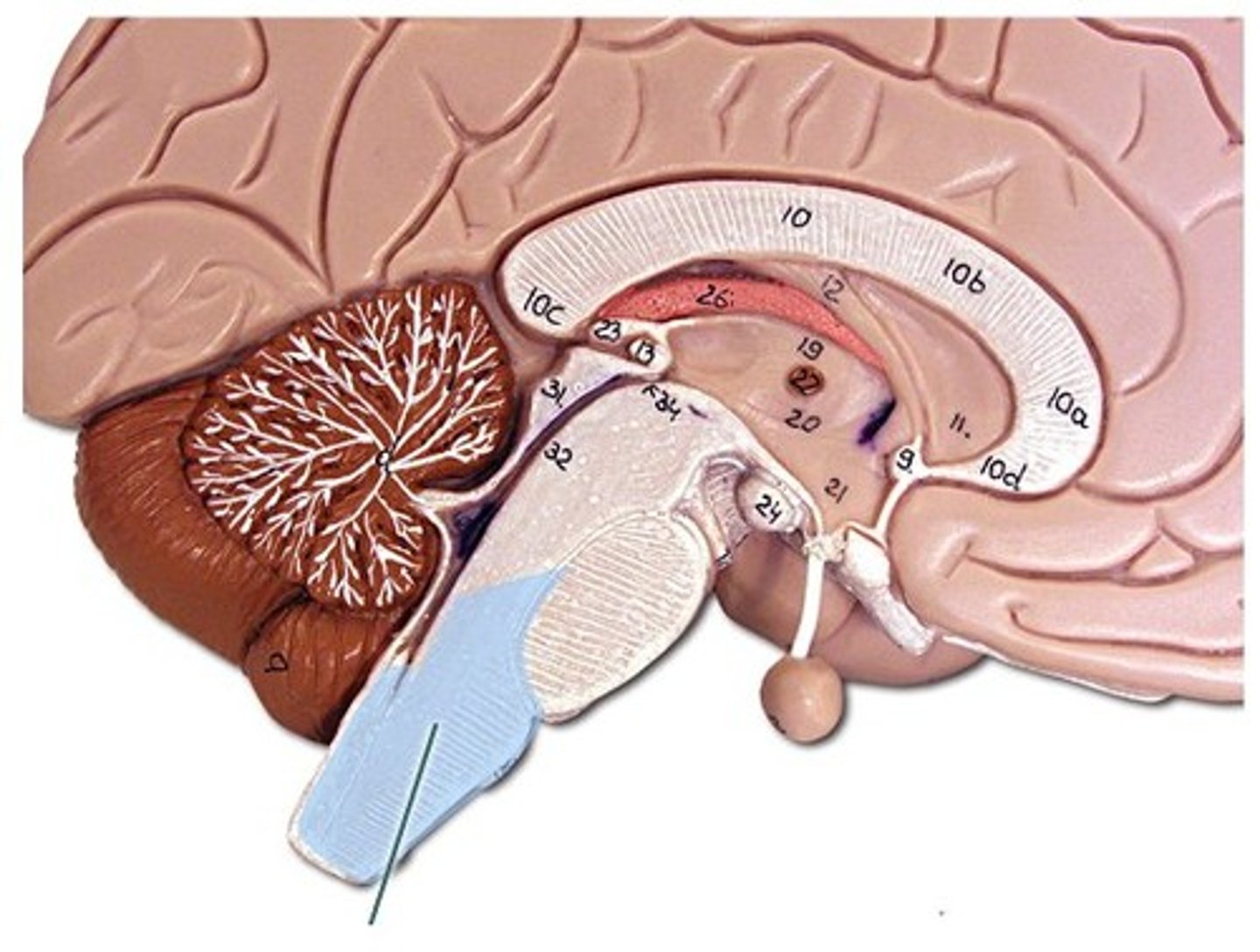
Midbrain
Uppermost part of brainstem; controls eye movement and auditory/visual reflexes.
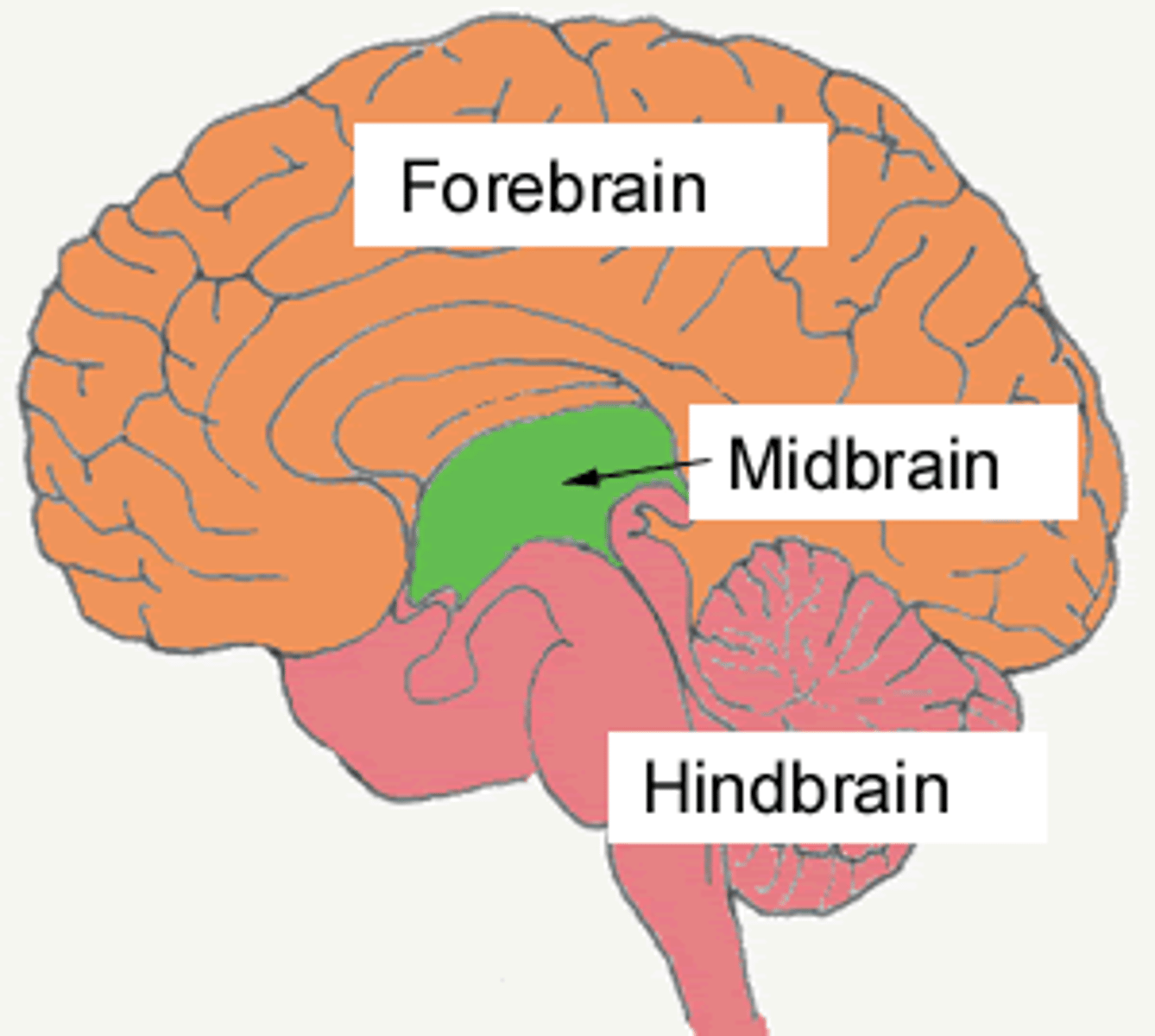
Cerebral Peduncles
Fiber tracts on anterior midbrain; carry motor signals between cerebrum and brainstem.
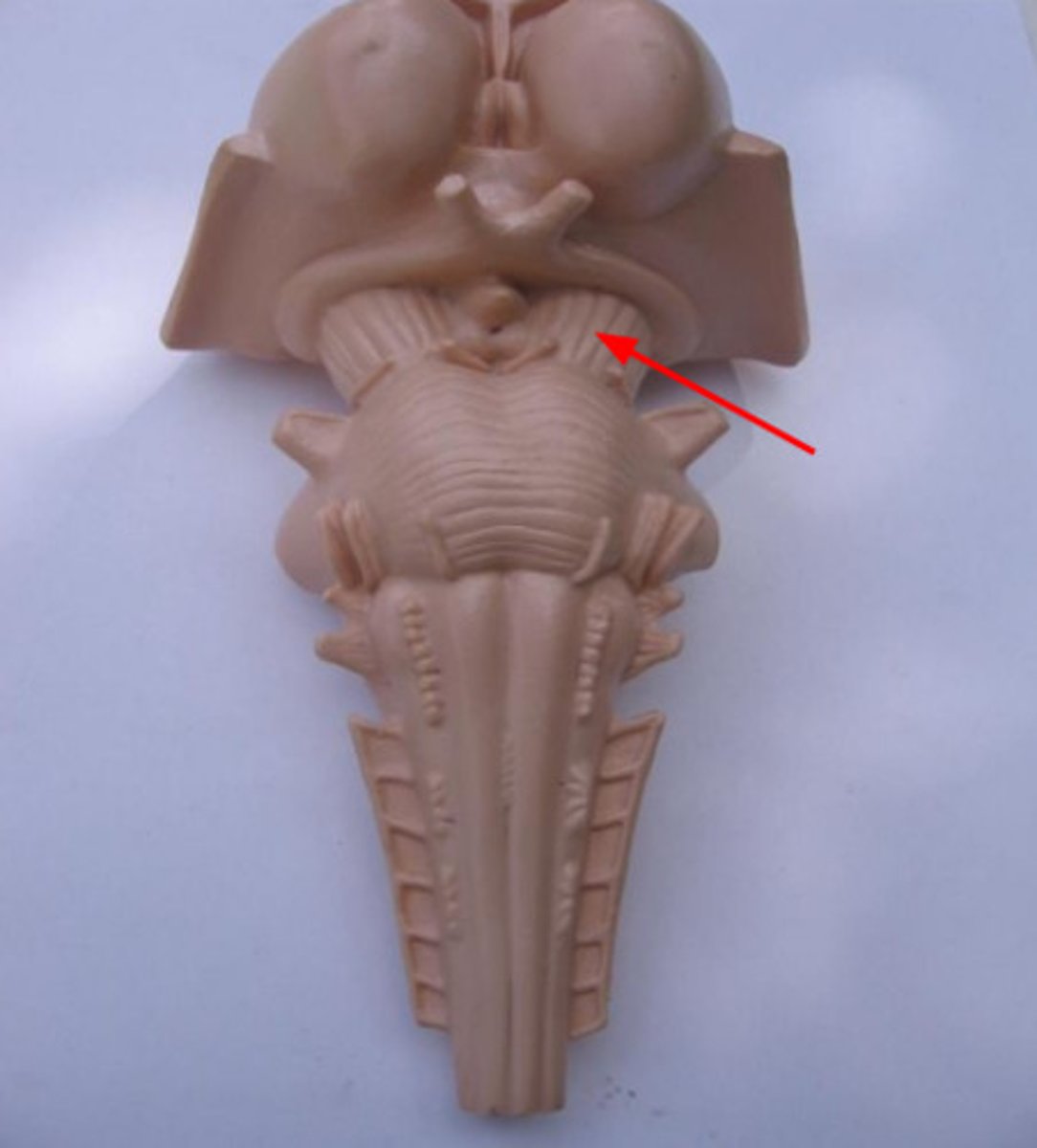
Corpora Quadrigemina
Four rounded bumps on posterior midbrain; involved in reflexes to visual (superior) and auditory (inferior) stimuli.
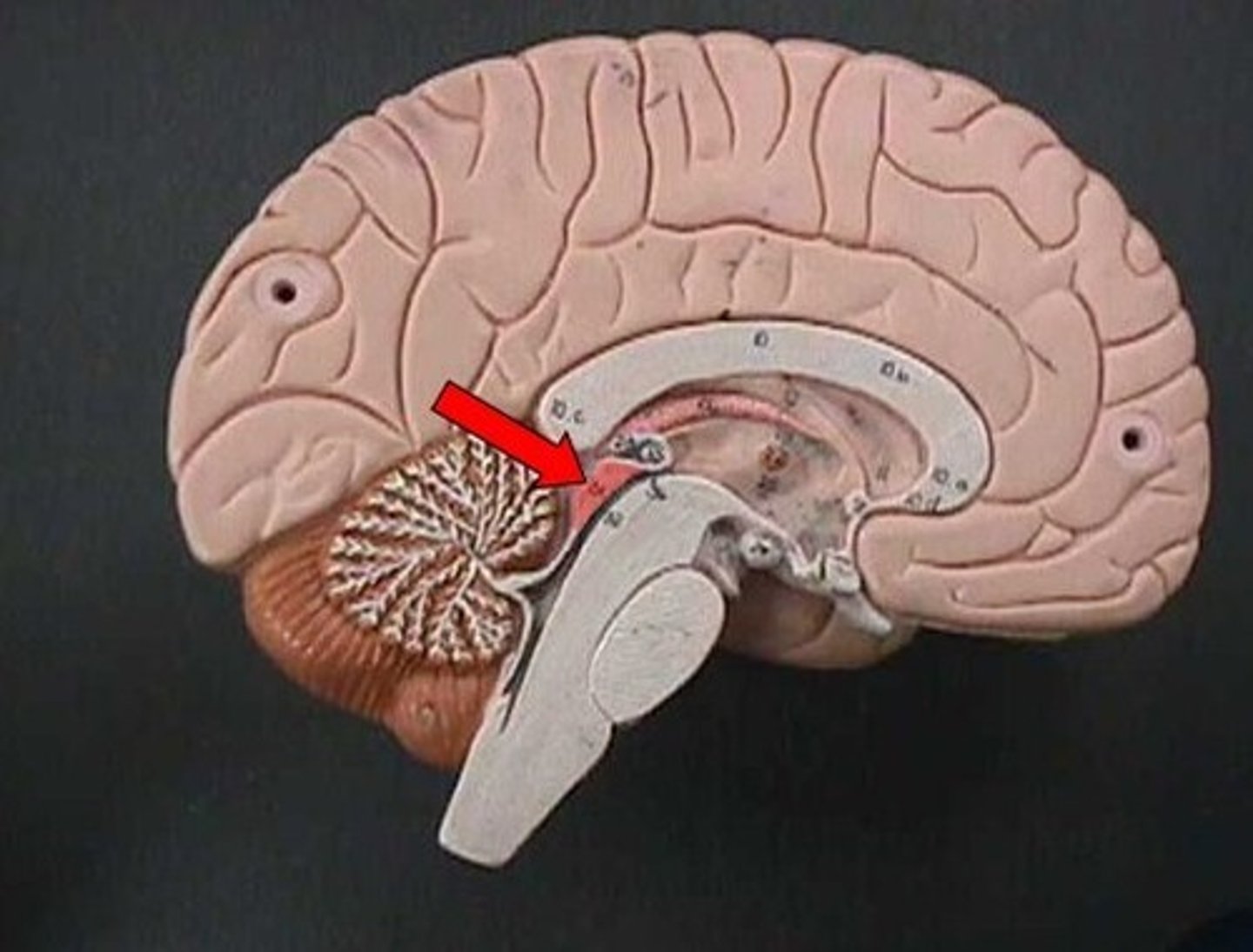
Superior Colliculi
Visual reflex centers; track moving objects.
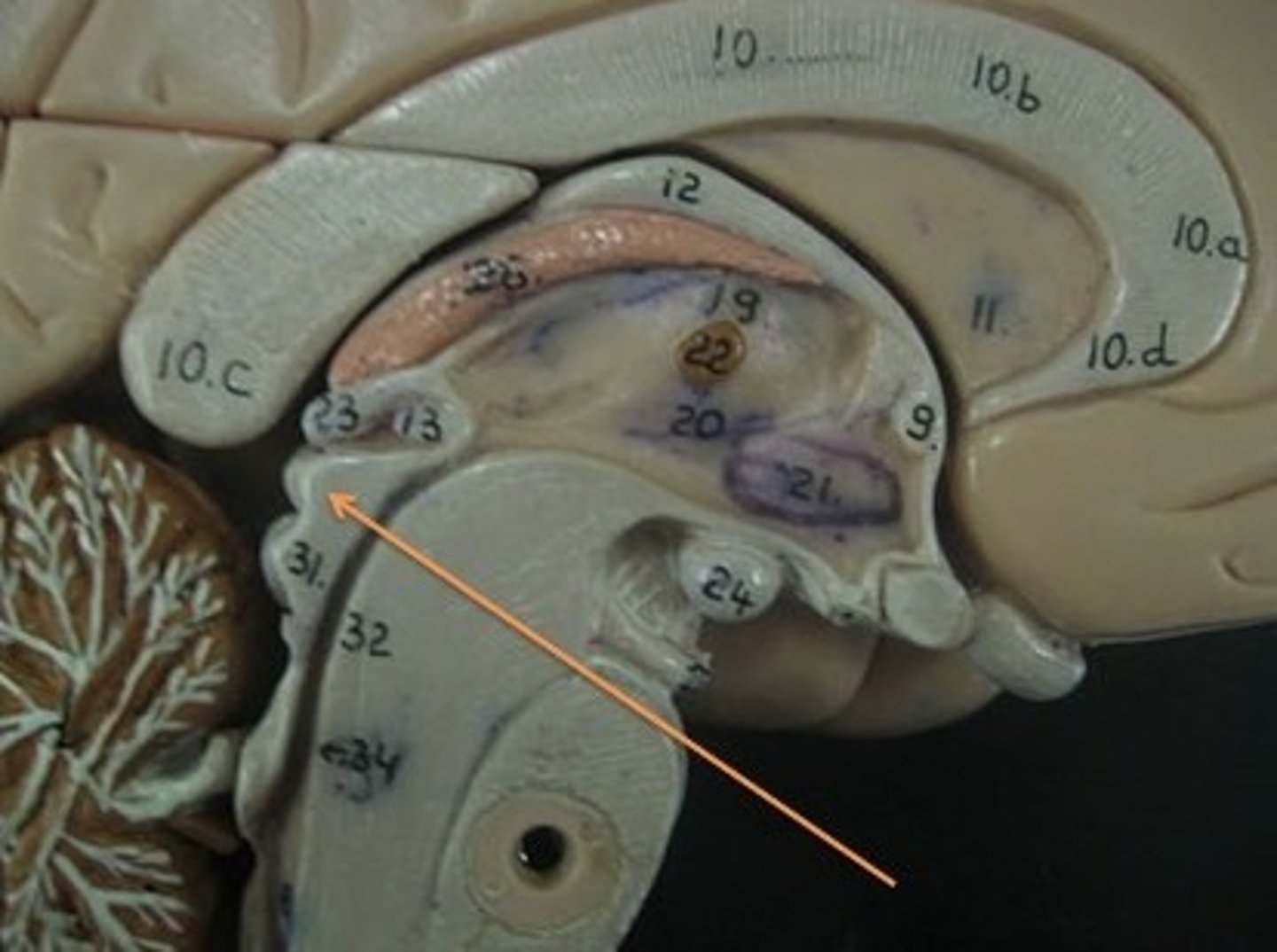
Inferior Colliculi
Auditory reflex centers; respond to sound.
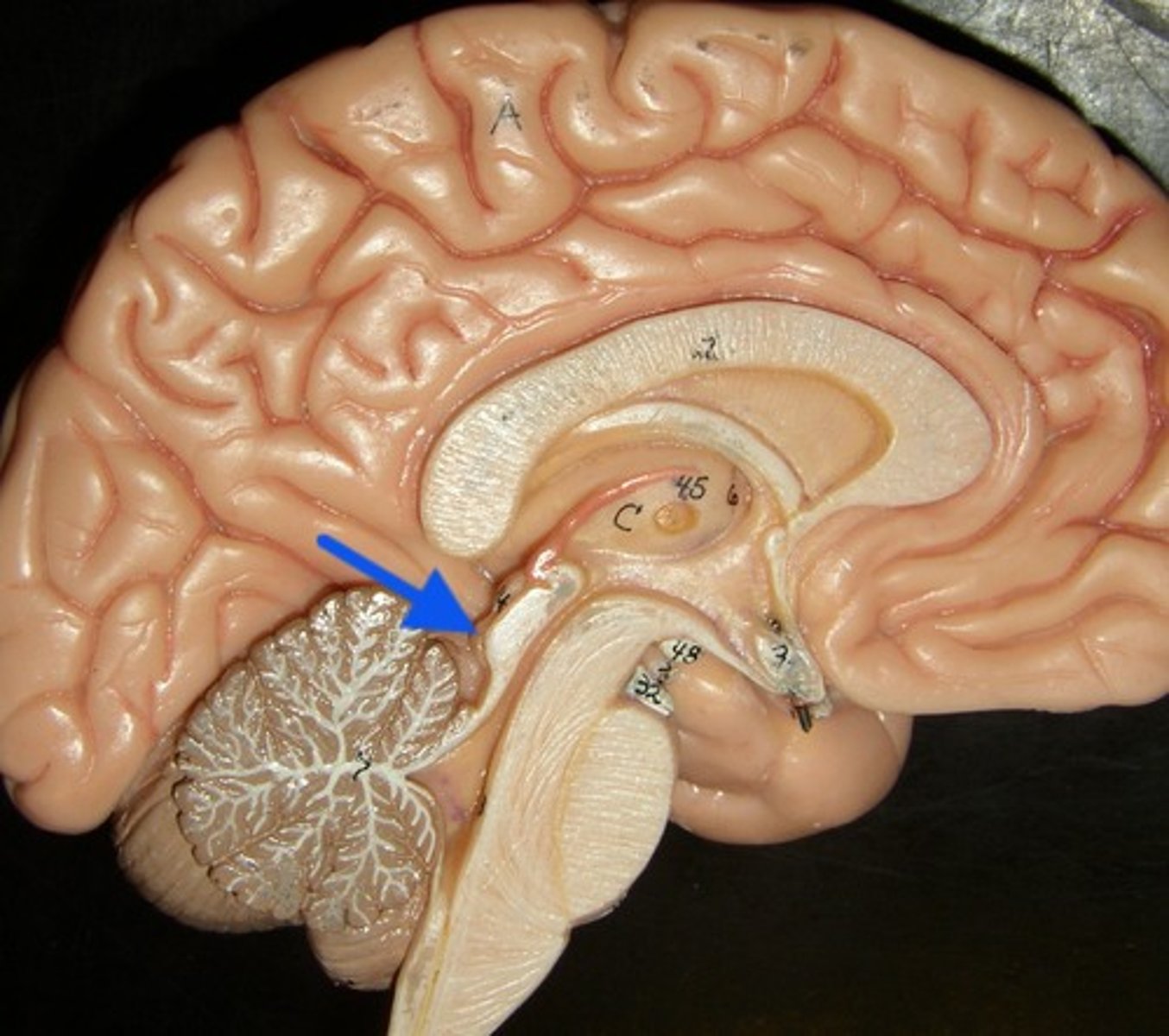
Pituitary Gland
Small endocrine gland under hypothalamus; secretes hormones controlling growth, metabolism, and reproduction.
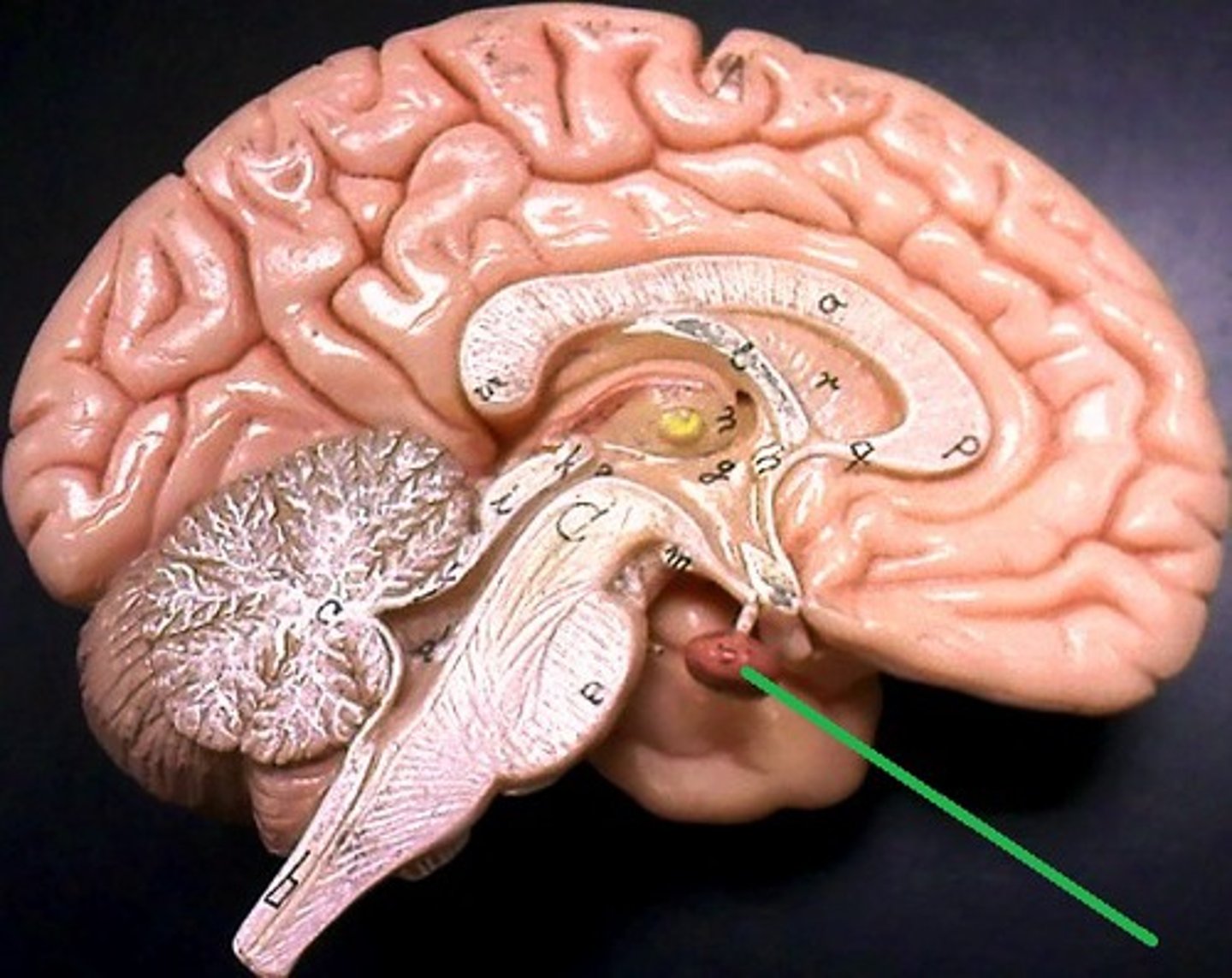
Olfactory Bulb
Front underside of brain; receives smell input from nasal cavity.
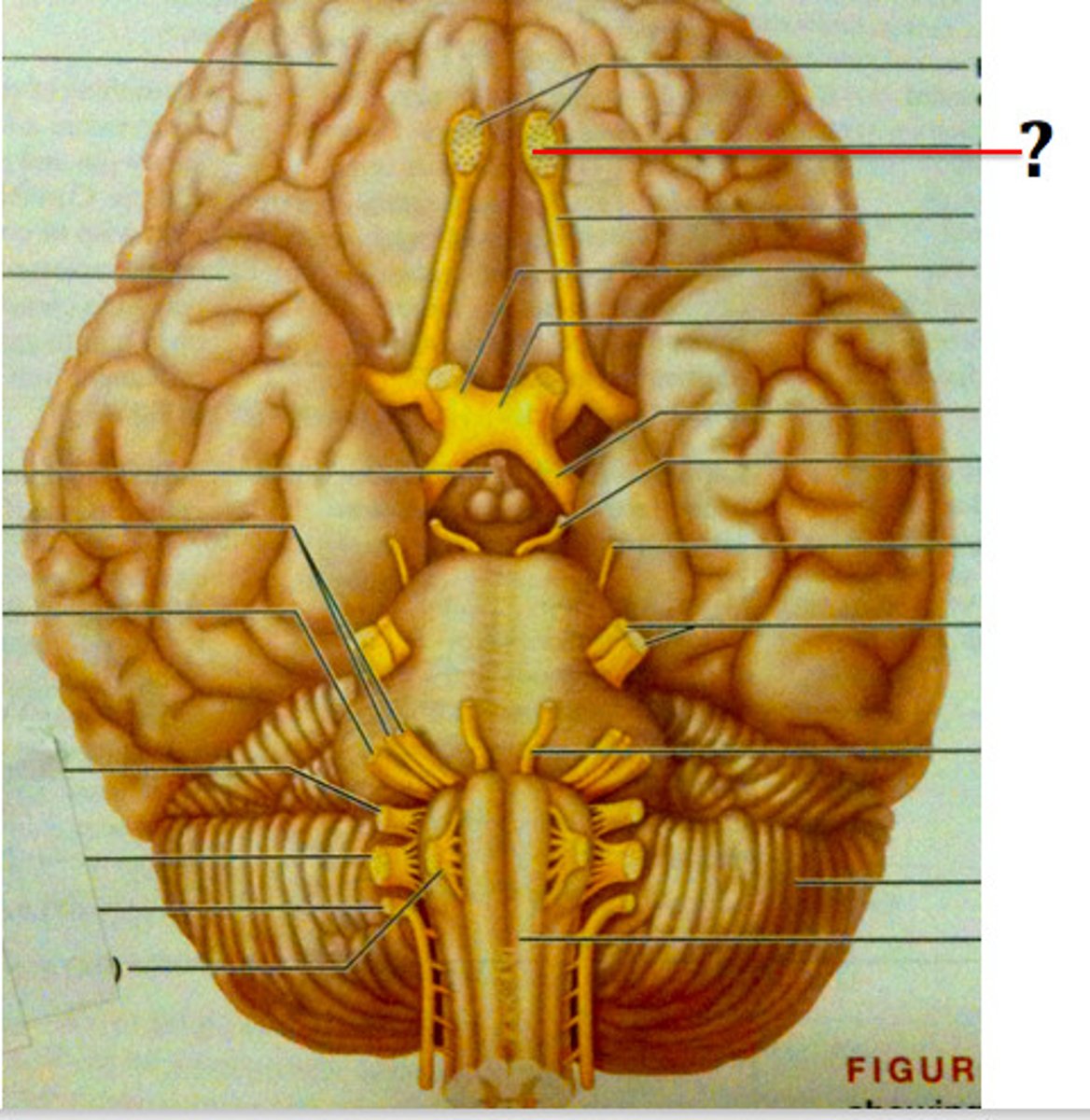
Olfactory Tract
Carries smell signals from olfactory bulbs to cerebrum.
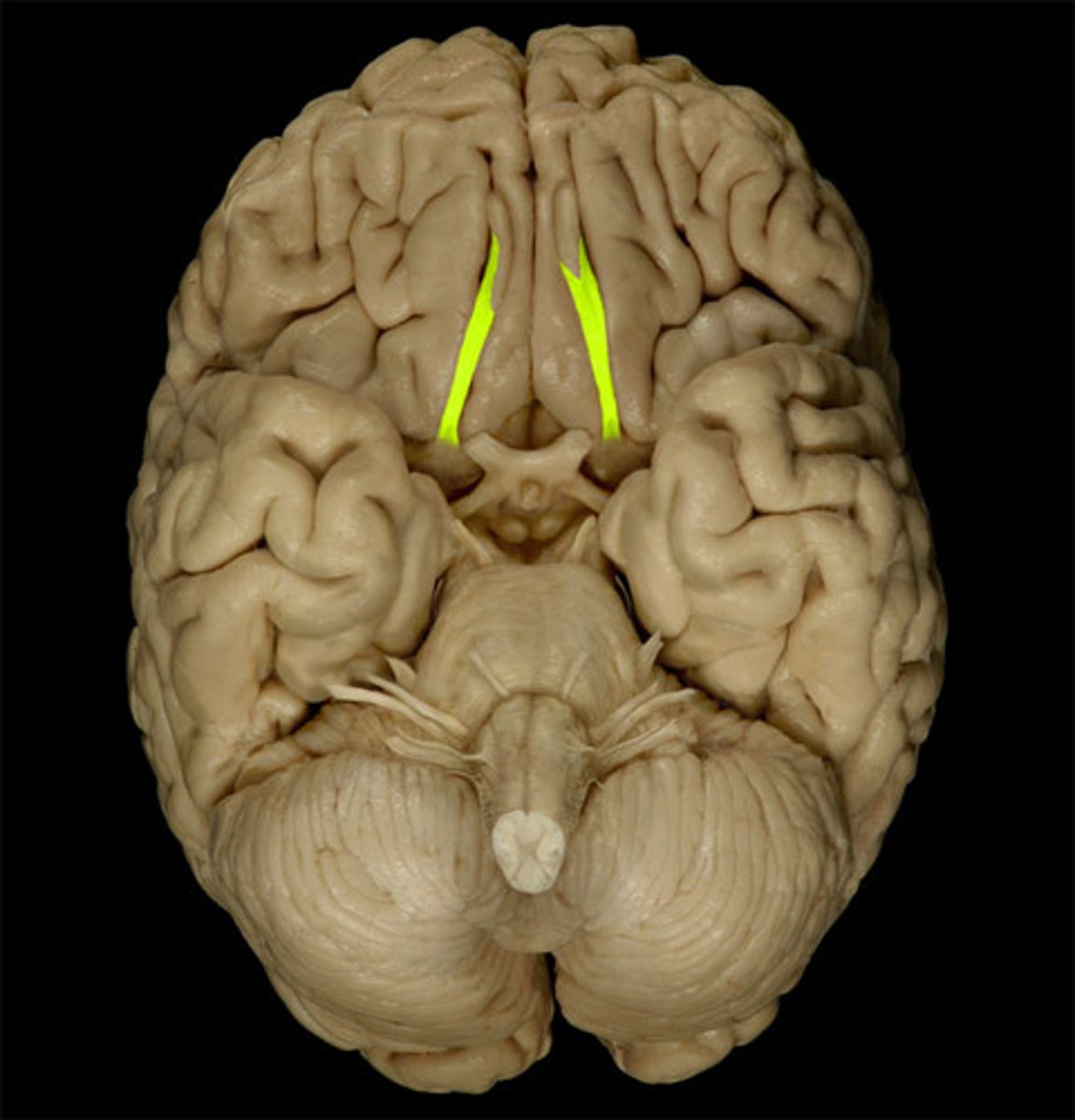
Optic Nerve
Transmits visual information from eyes to optic chiasma.
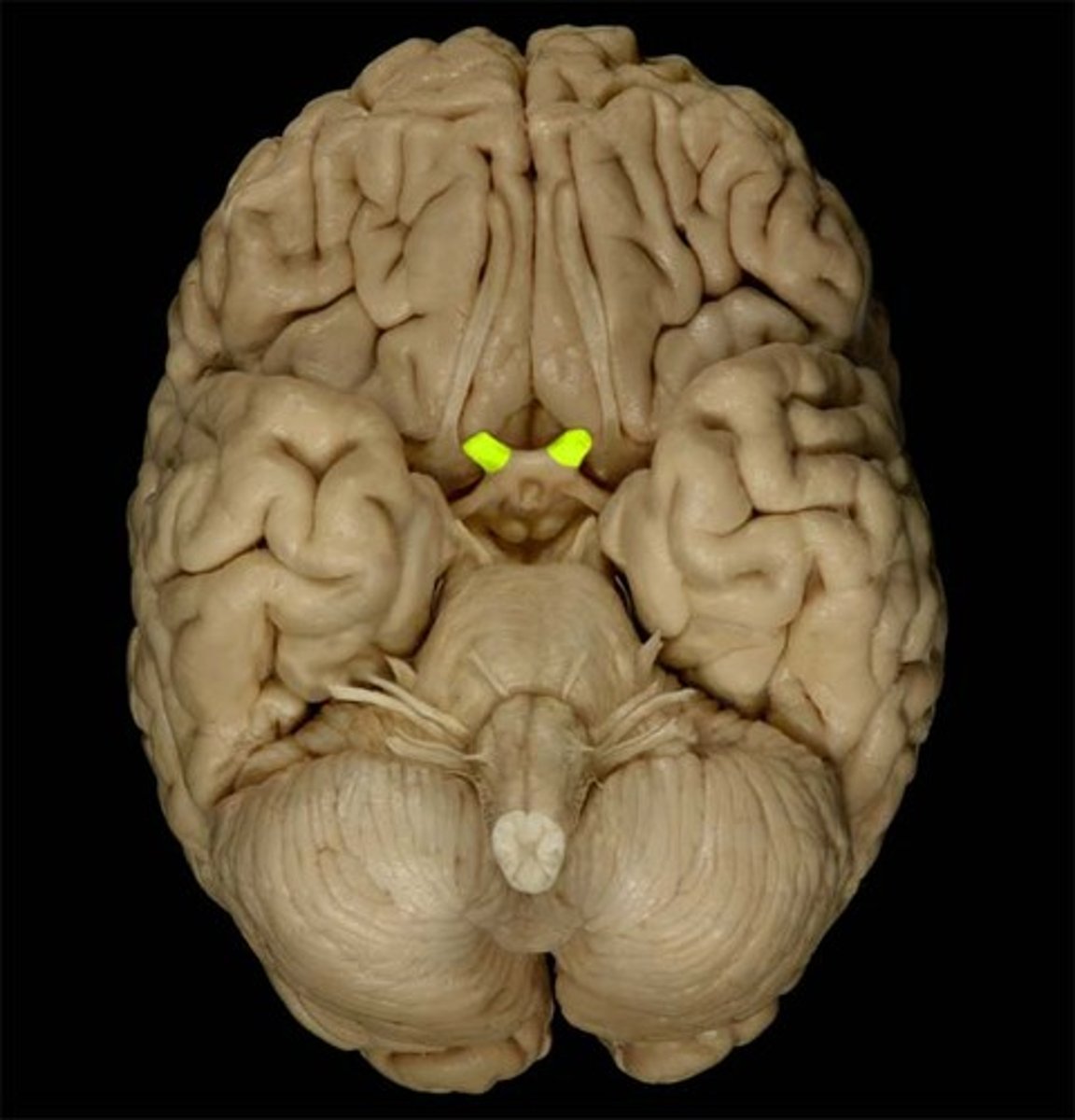
Optic Chiasma
X-shaped crossing where some optic nerve fibers switch sides.
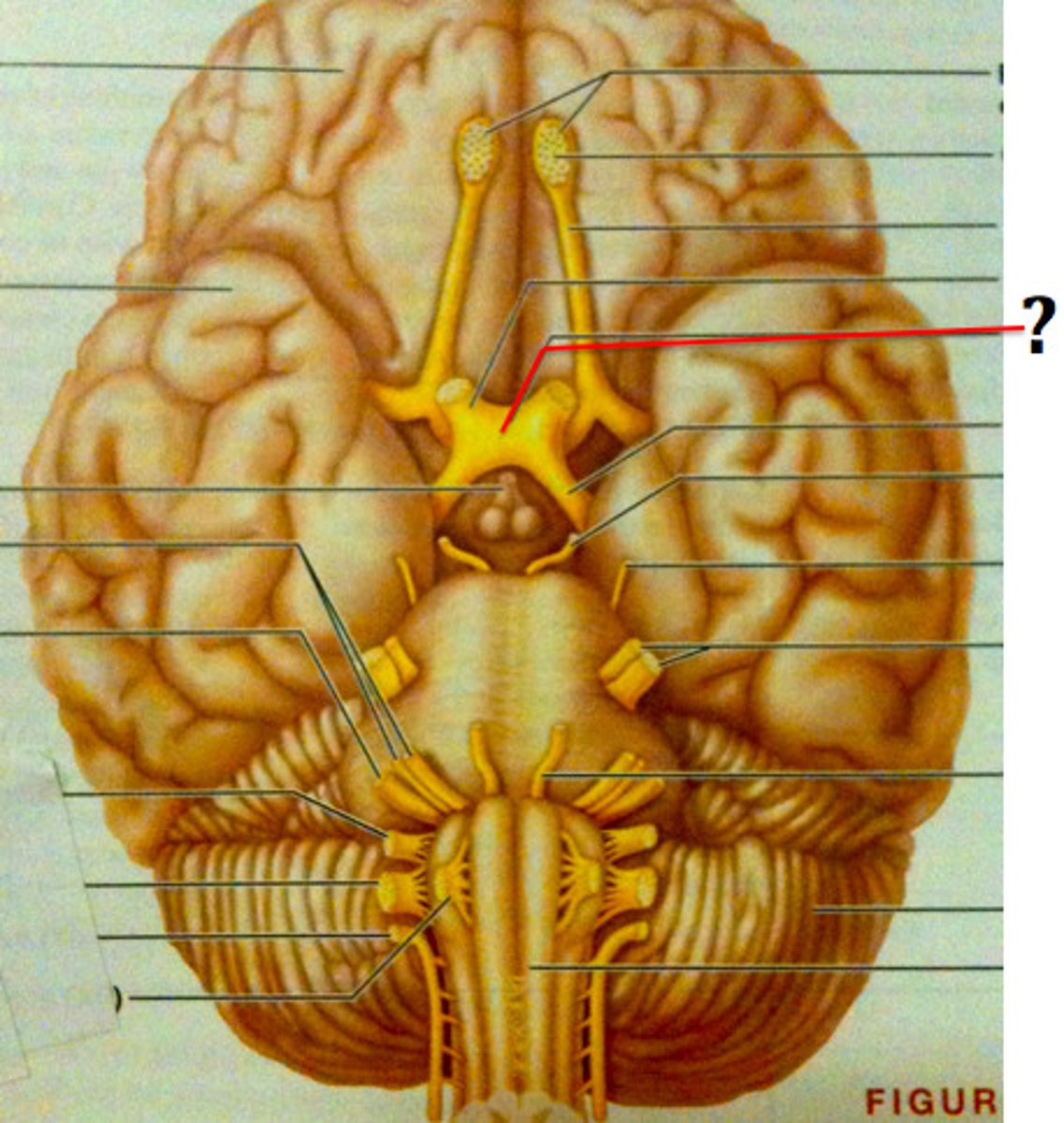
Optic Tract
Carries visual information from chiasma to occipital lobe.
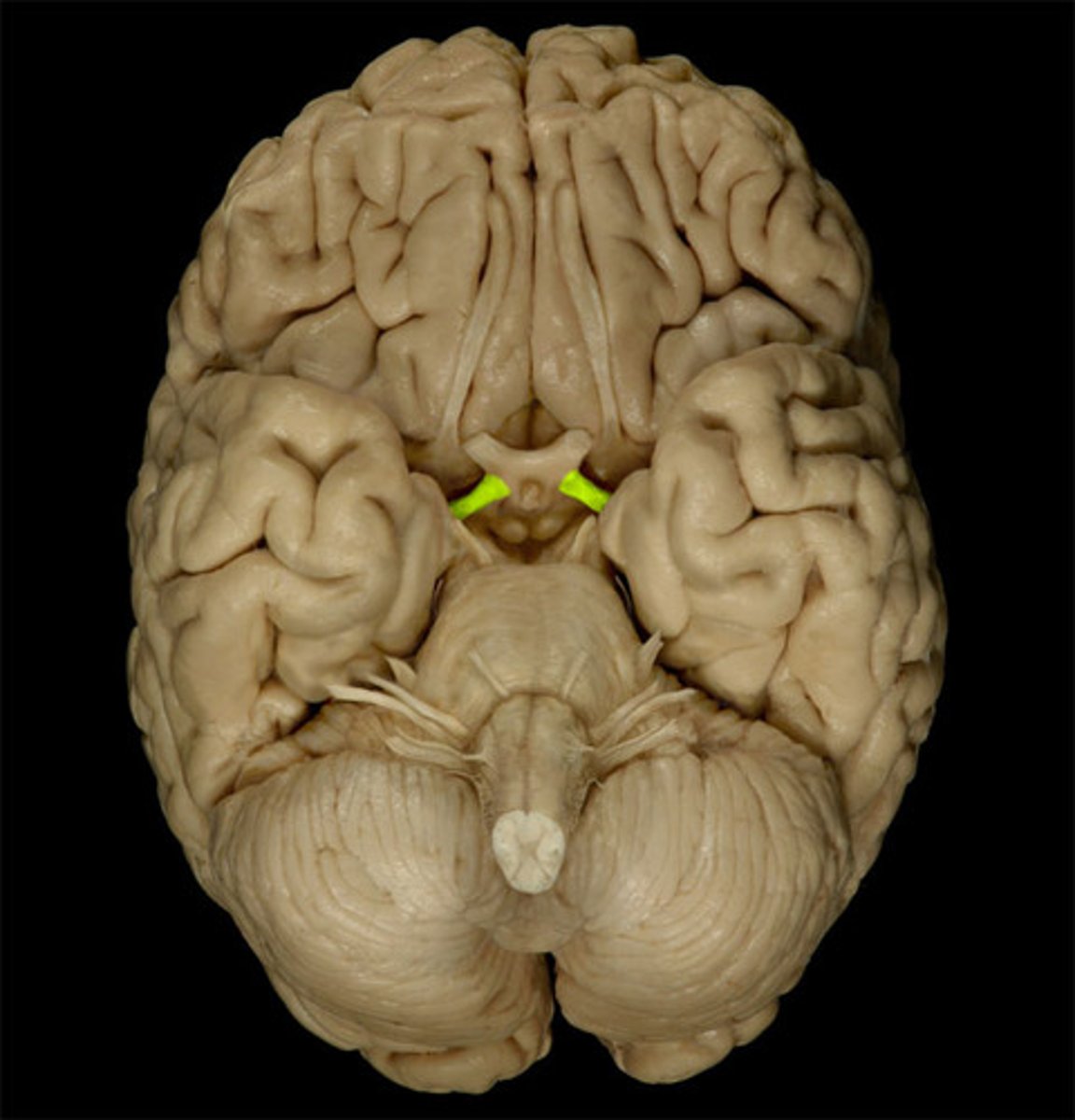
Cerebral Cortex
Outer gray layer of cerebrum; site of consciousness, reasoning, and sensory interpretation.
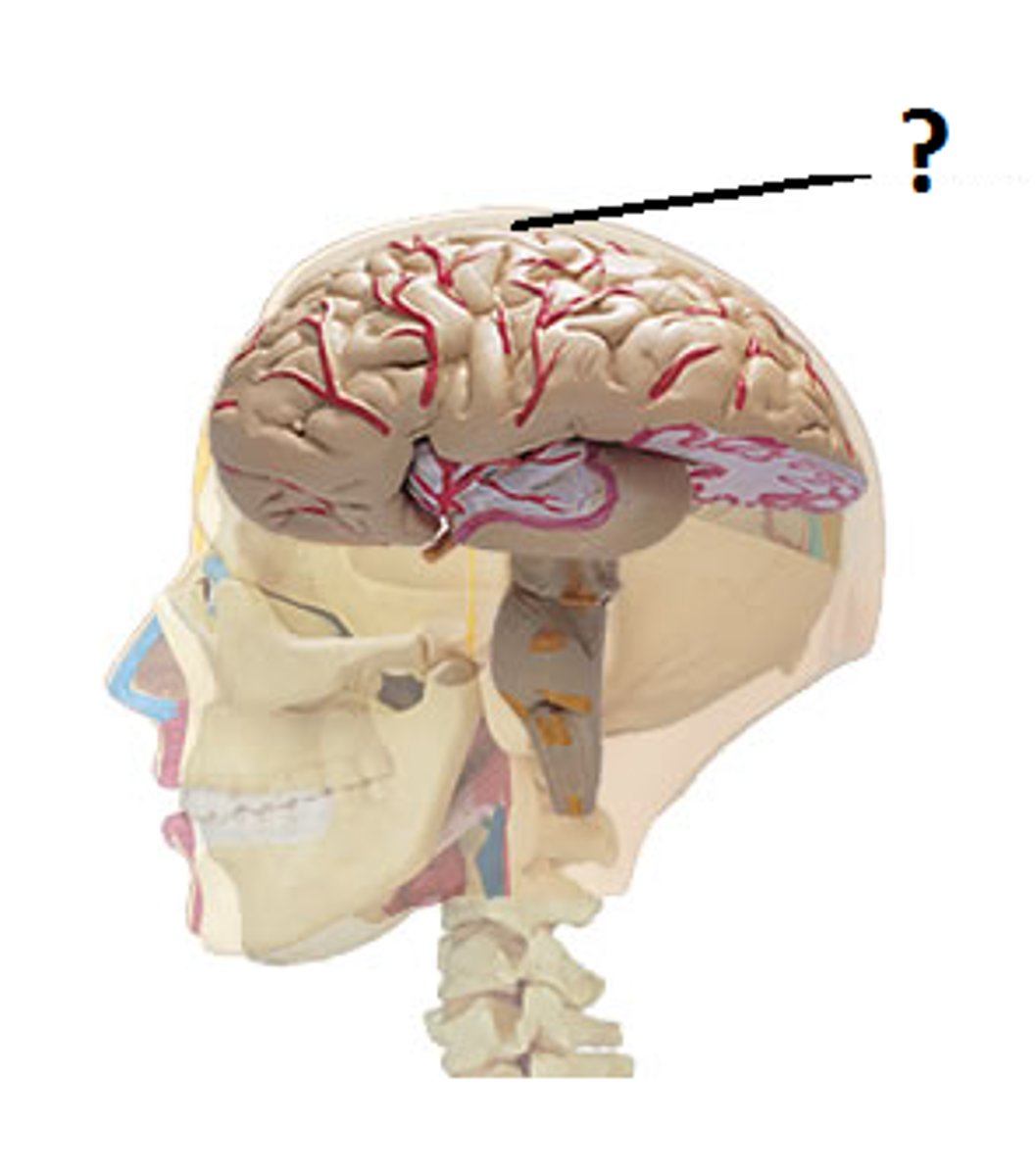
Arbor Vitae
White matter of cerebellum shaped like a tree; coordinates muscle movements.
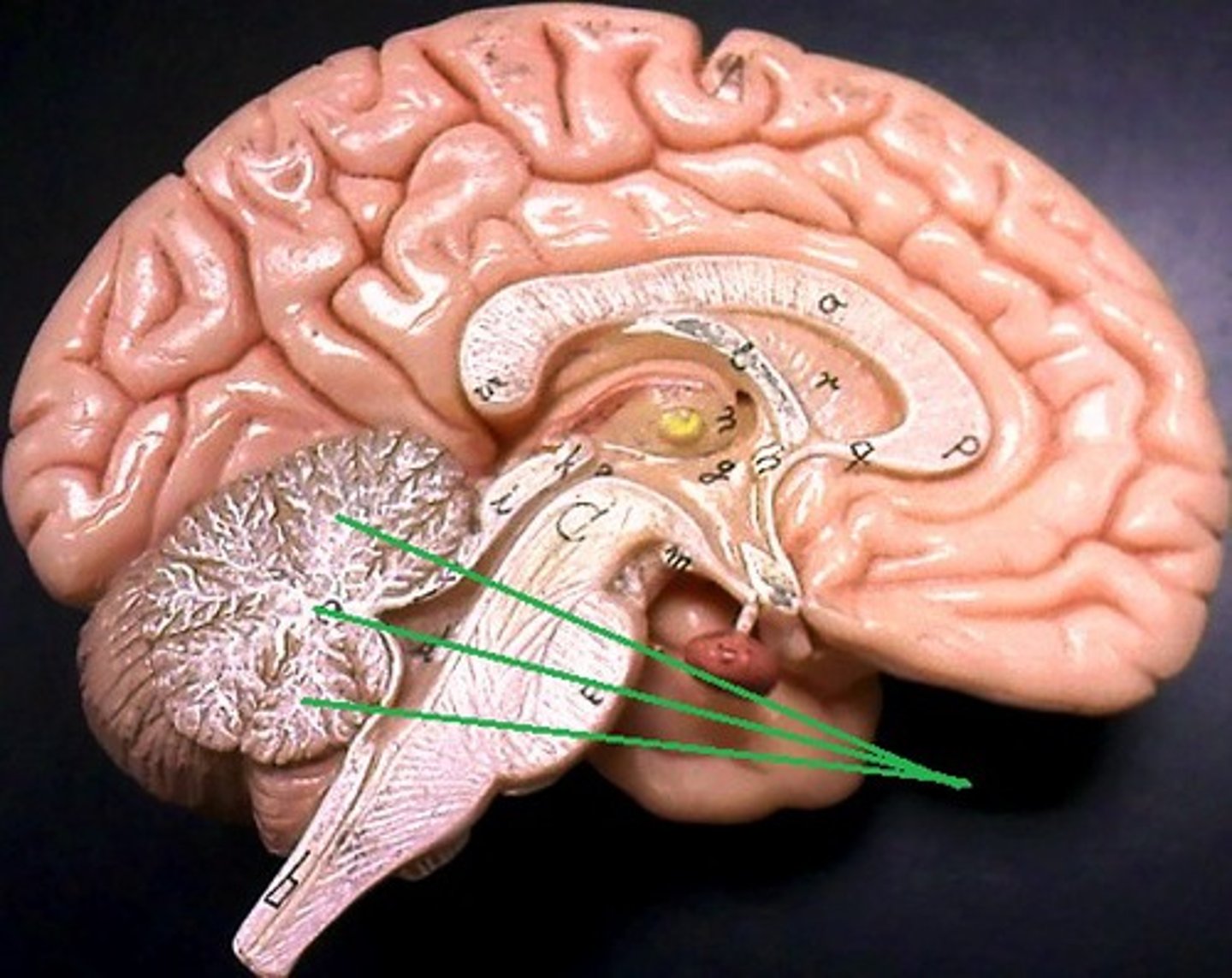
Cerebellar Peduncles
Three fiber tracts connecting cerebellum to brainstem; carry sensory and motor information.
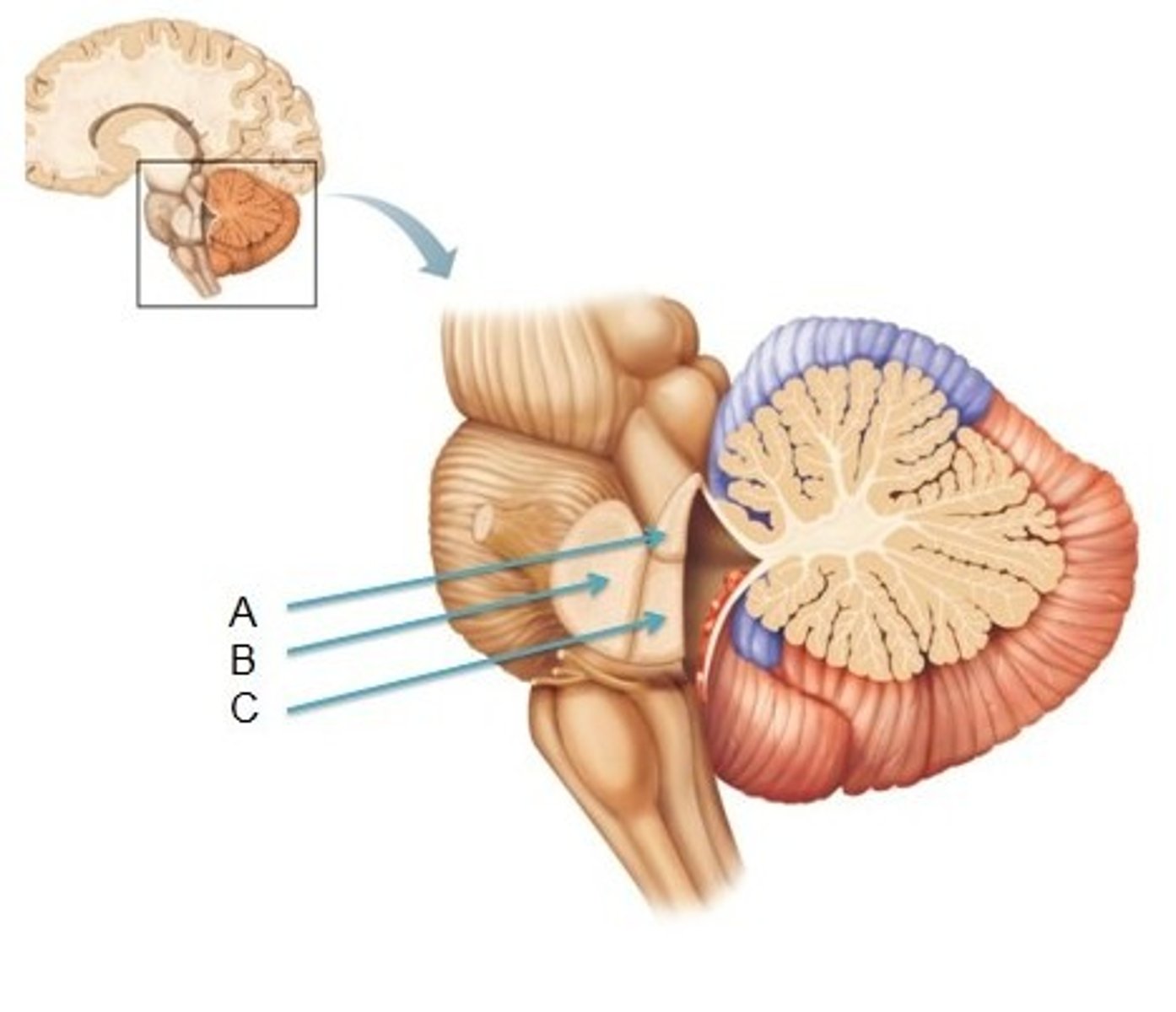
Corpus Callosum
Thick band of white matter connecting left and right hemispheres; allows communication between them.
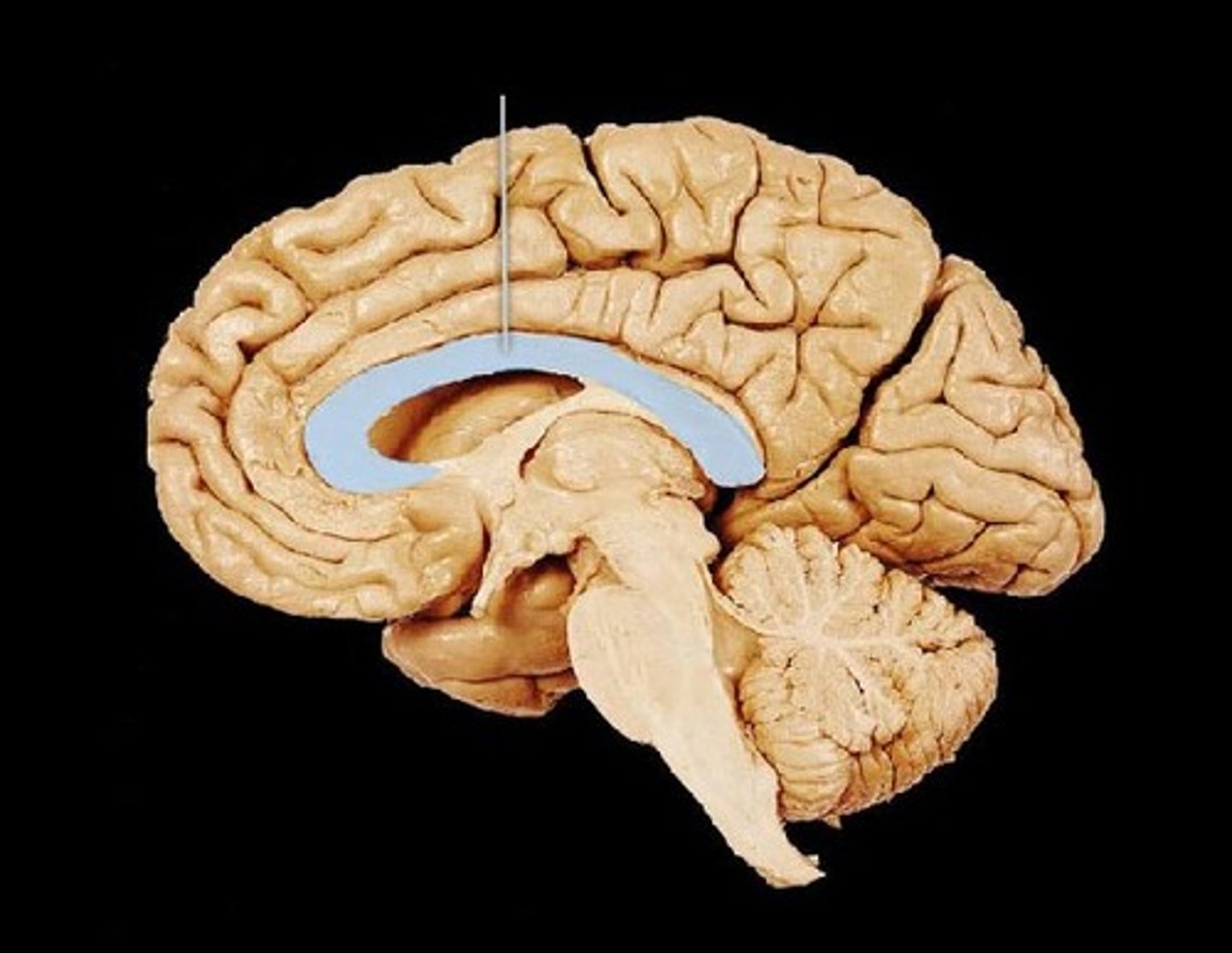
Thalamus
Central relay station for sensory information going to the cerebral cortex.
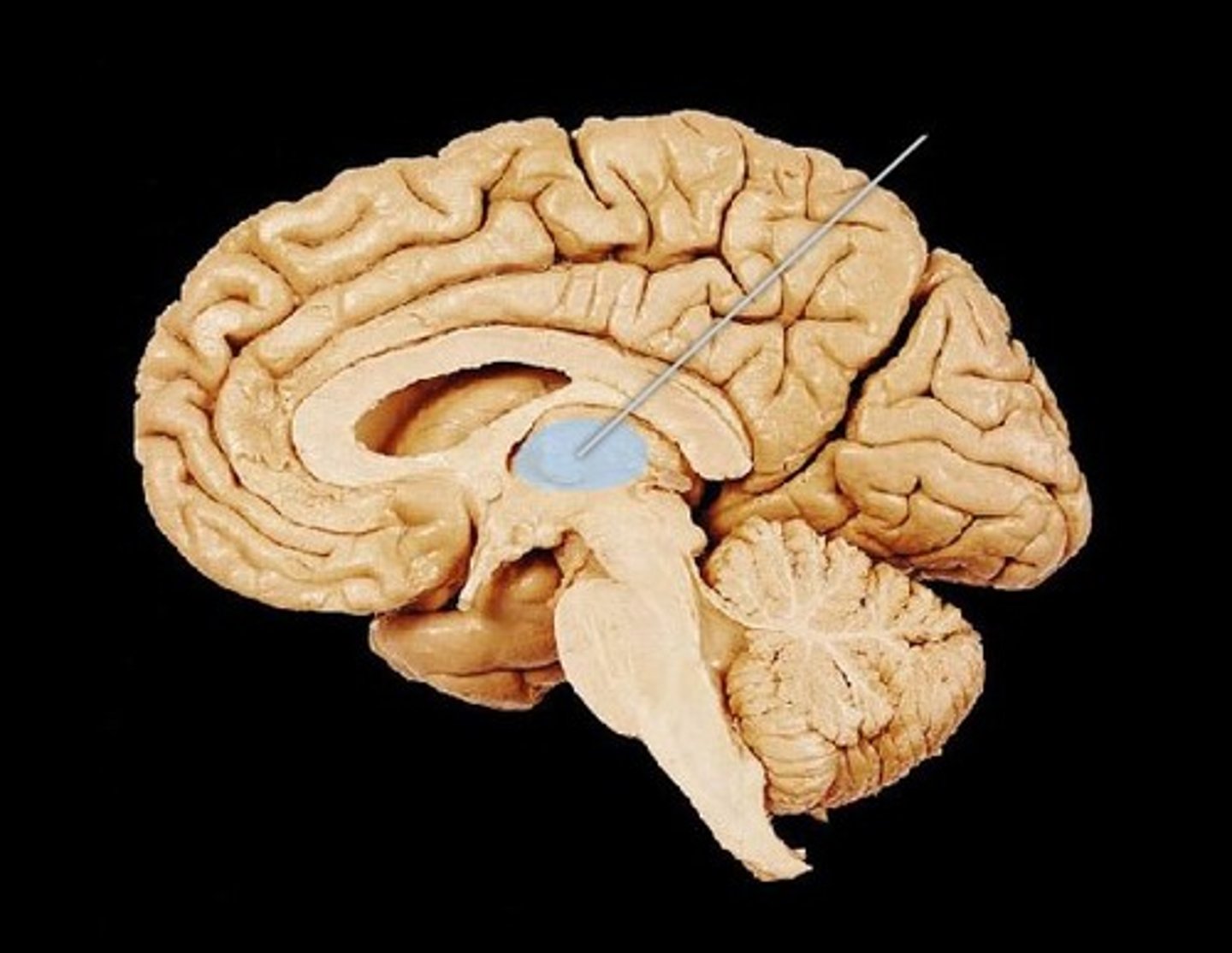
Hypothalamus
Below thalamus; regulates hunger, thirst, temperature, hormones, and autonomic functions.
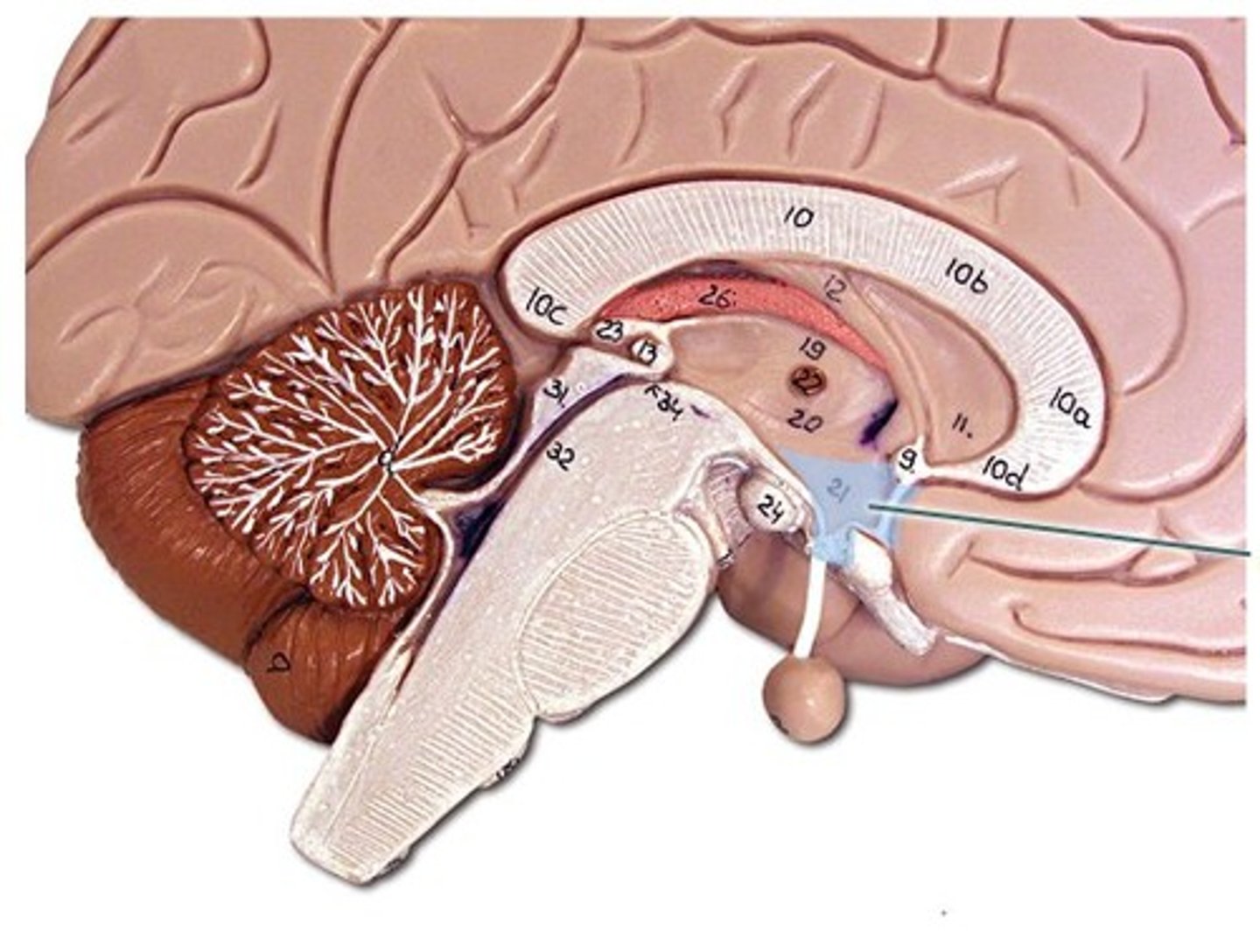
Pineal Gland
Small gland behind thalamus; produces melatonin for sleep regulation.
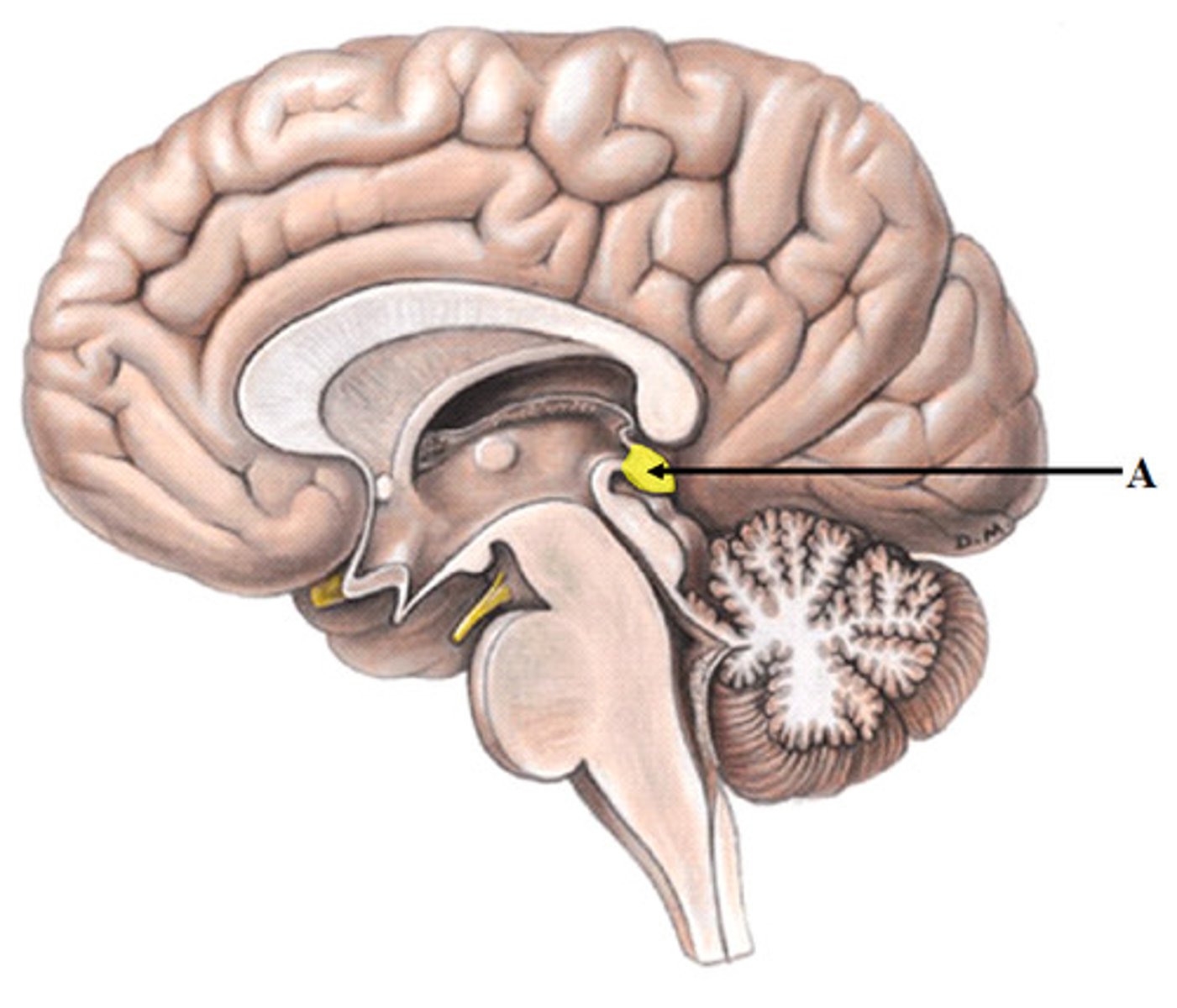
Lateral Ventricles
Paired chambers within cerebrum; contain CSF.
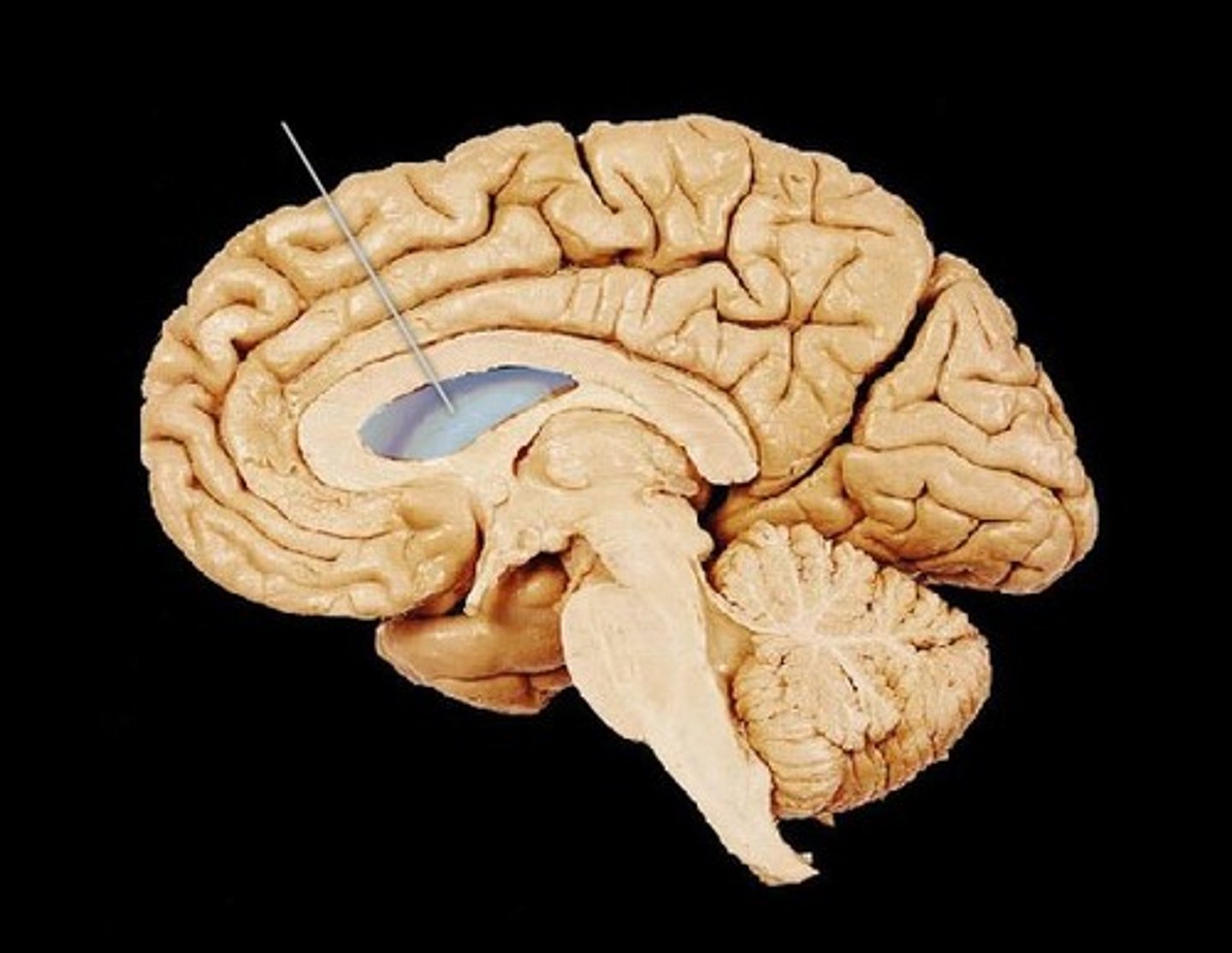
Third Ventricle
Narrow cavity between thalamic halves; filled with CSF.
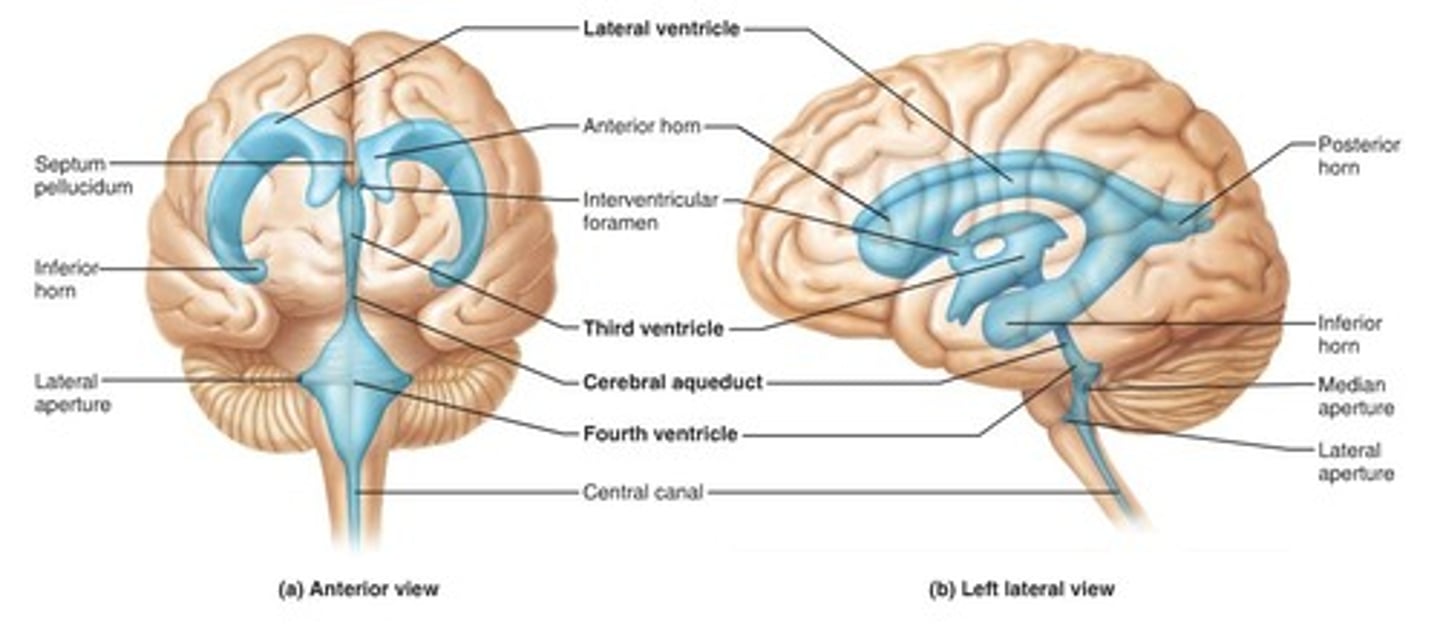
Cerebral Aqueduct
Narrow channel through midbrain connecting 3rd and 4th ventricles.
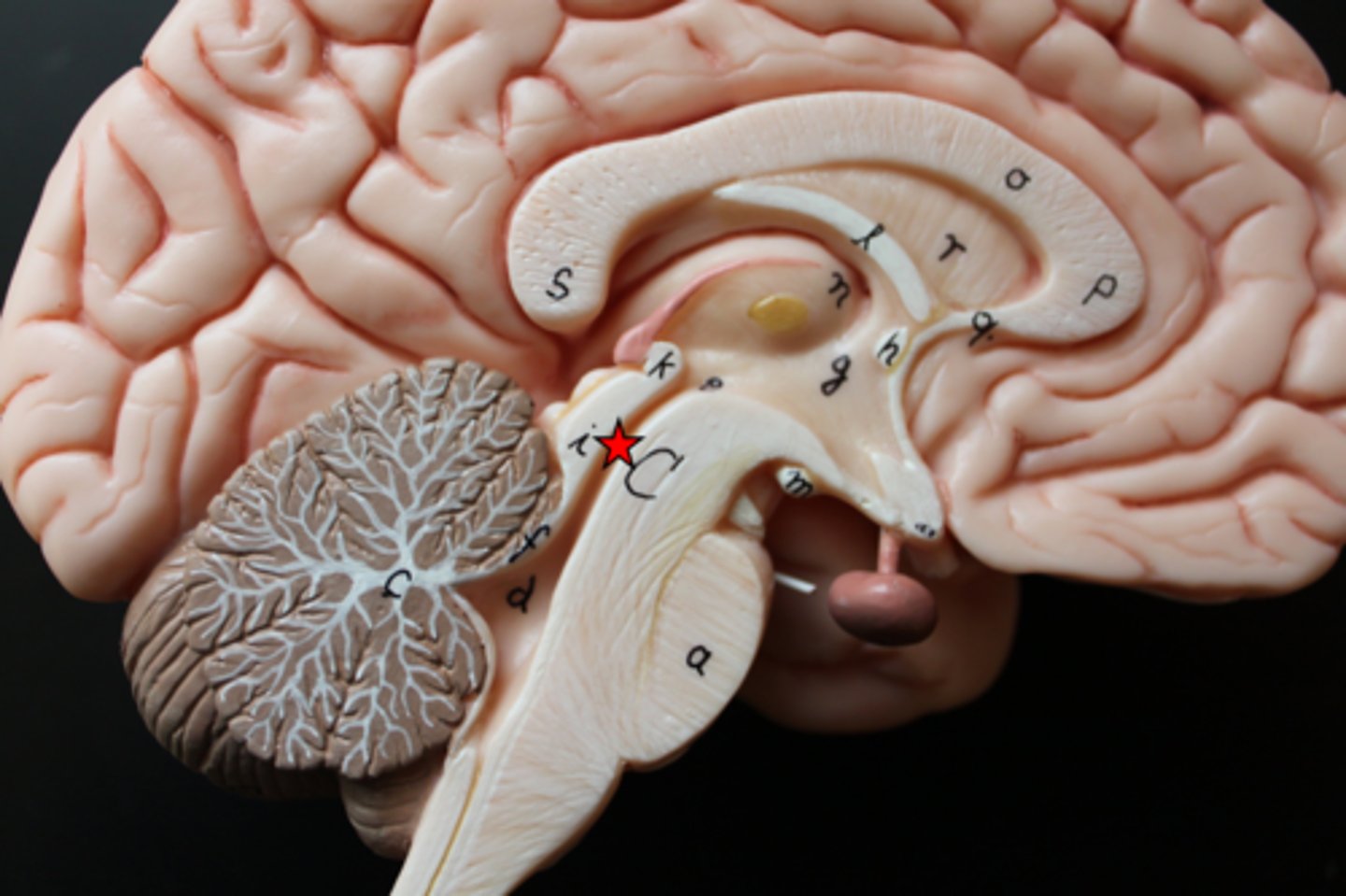
Mammillary Body
Round structure beneath hypothalamus; involved in memory and smell reflexes.
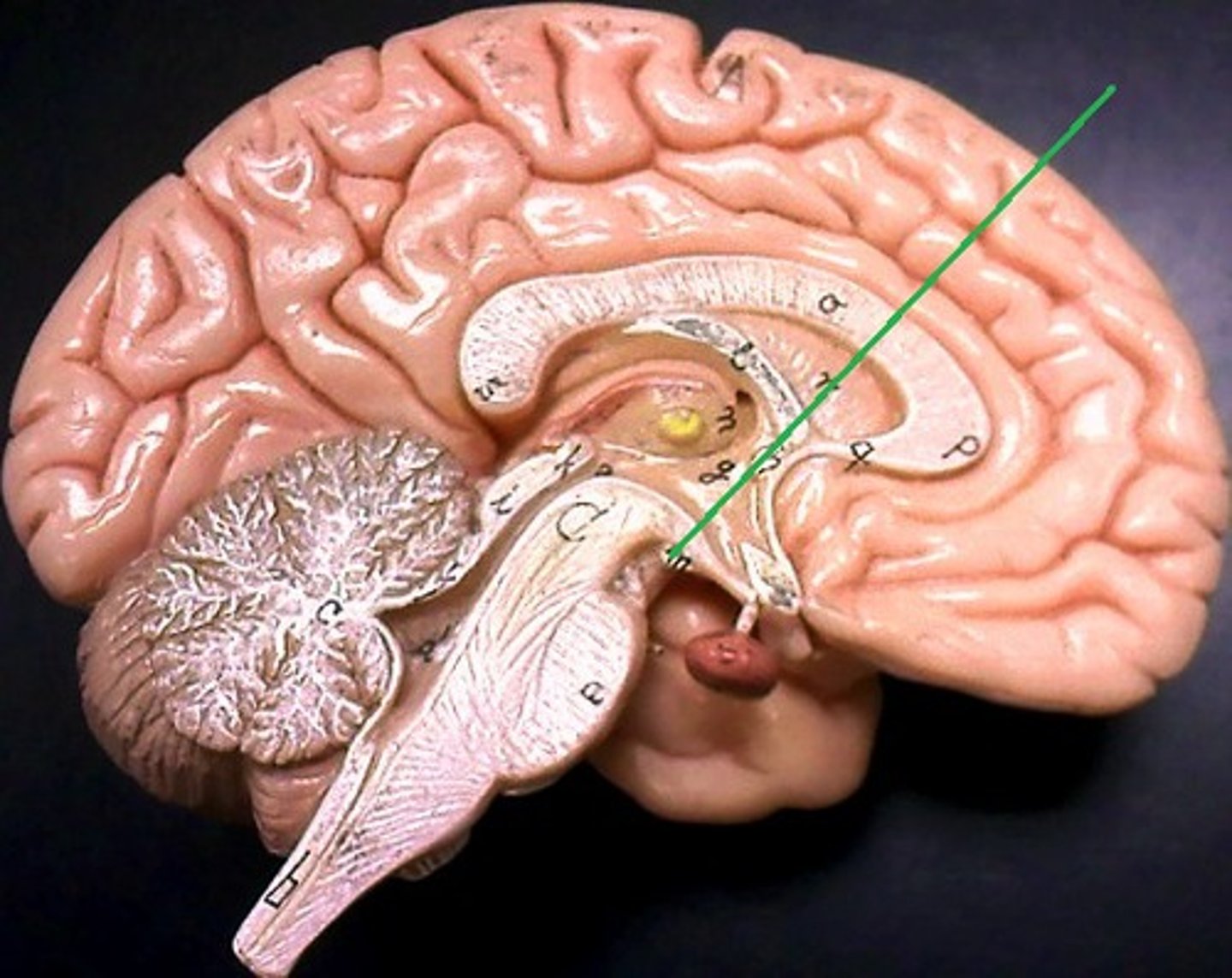
Infundibulum
Stalk connecting hypothalamus to pituitary gland; transmits hormones.
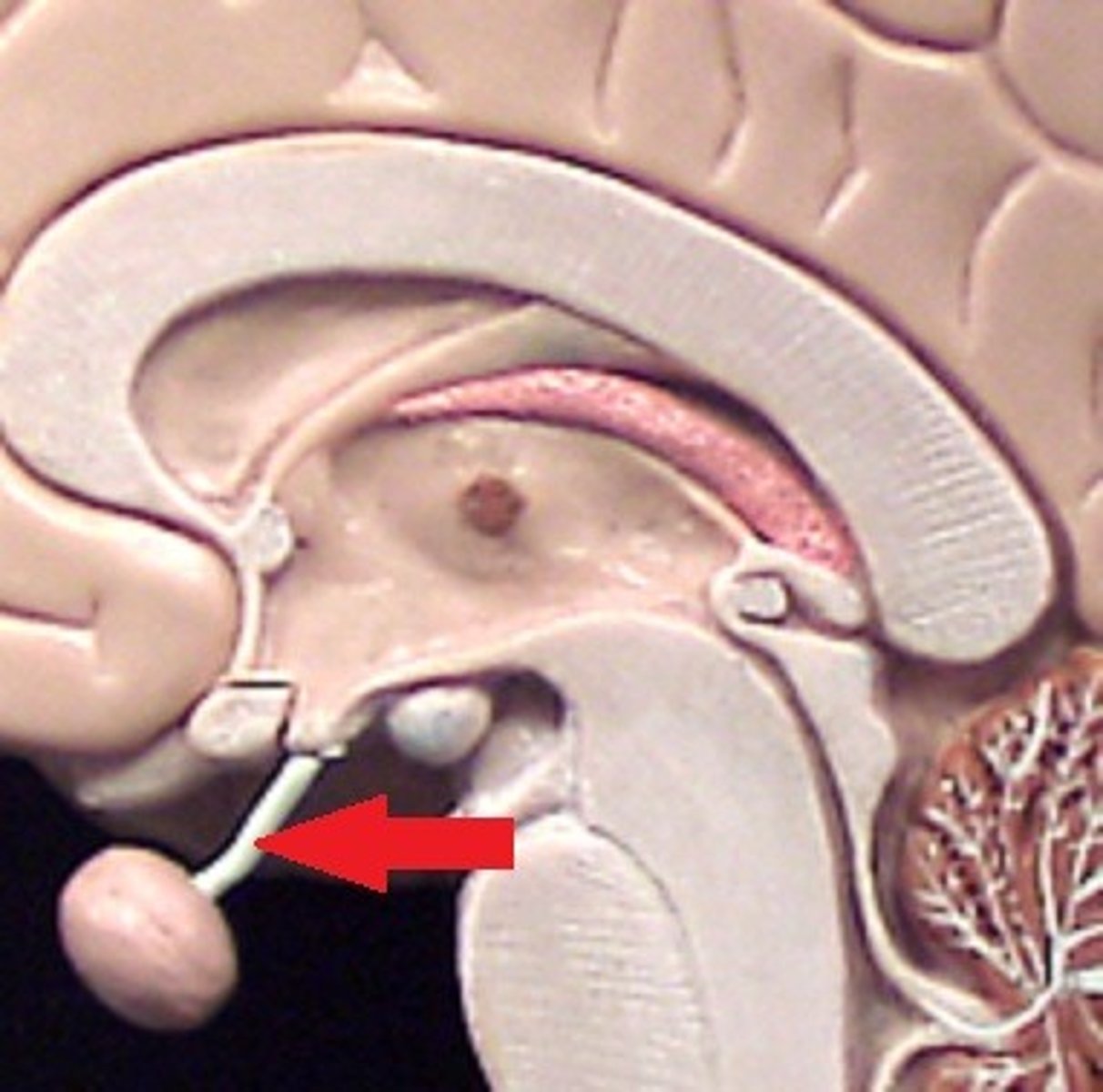
Longitudinal Fissure
Deep groove separating left and right cerebral hemispheres.
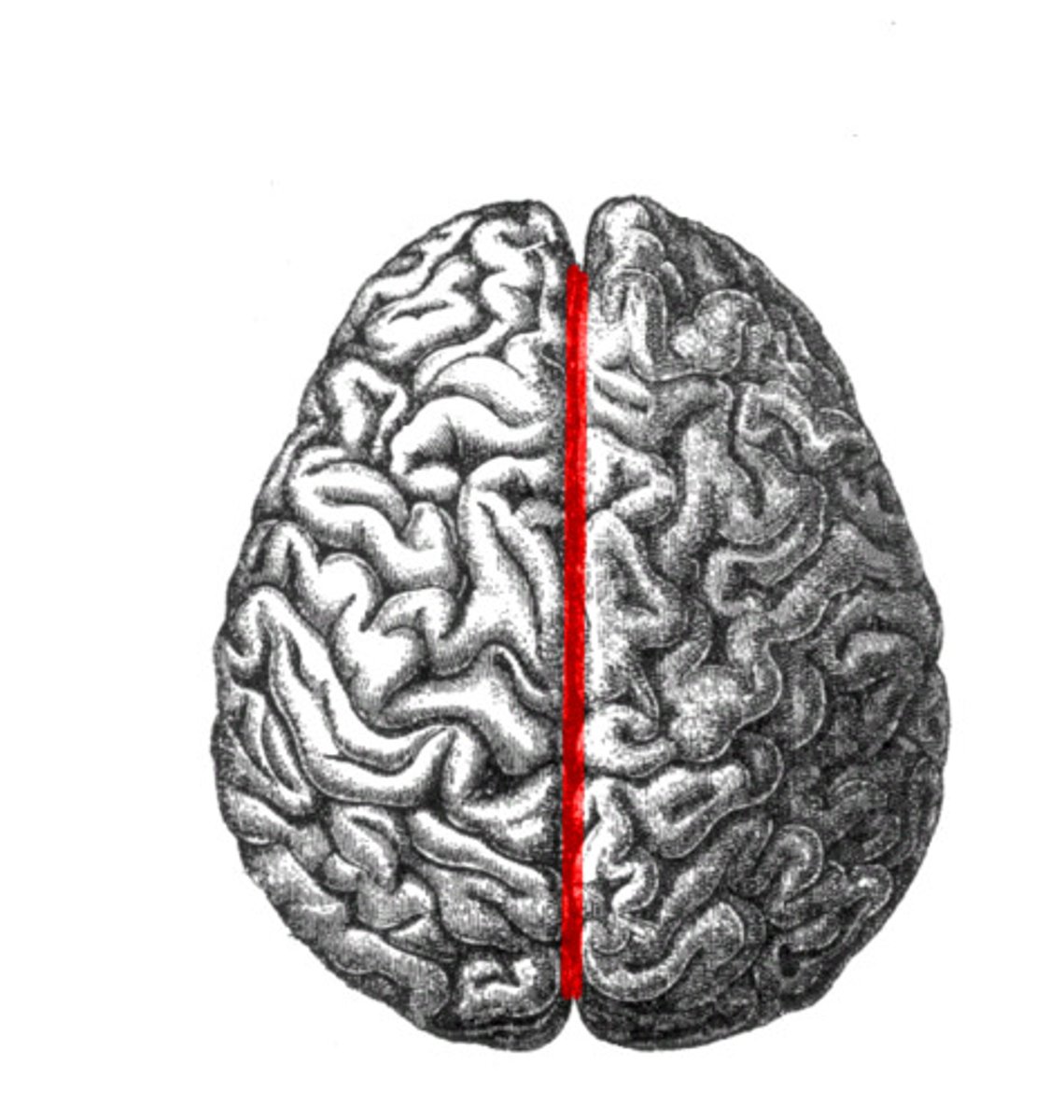
Sulcus
Shallow grooves between folds (gyri) of the brain.
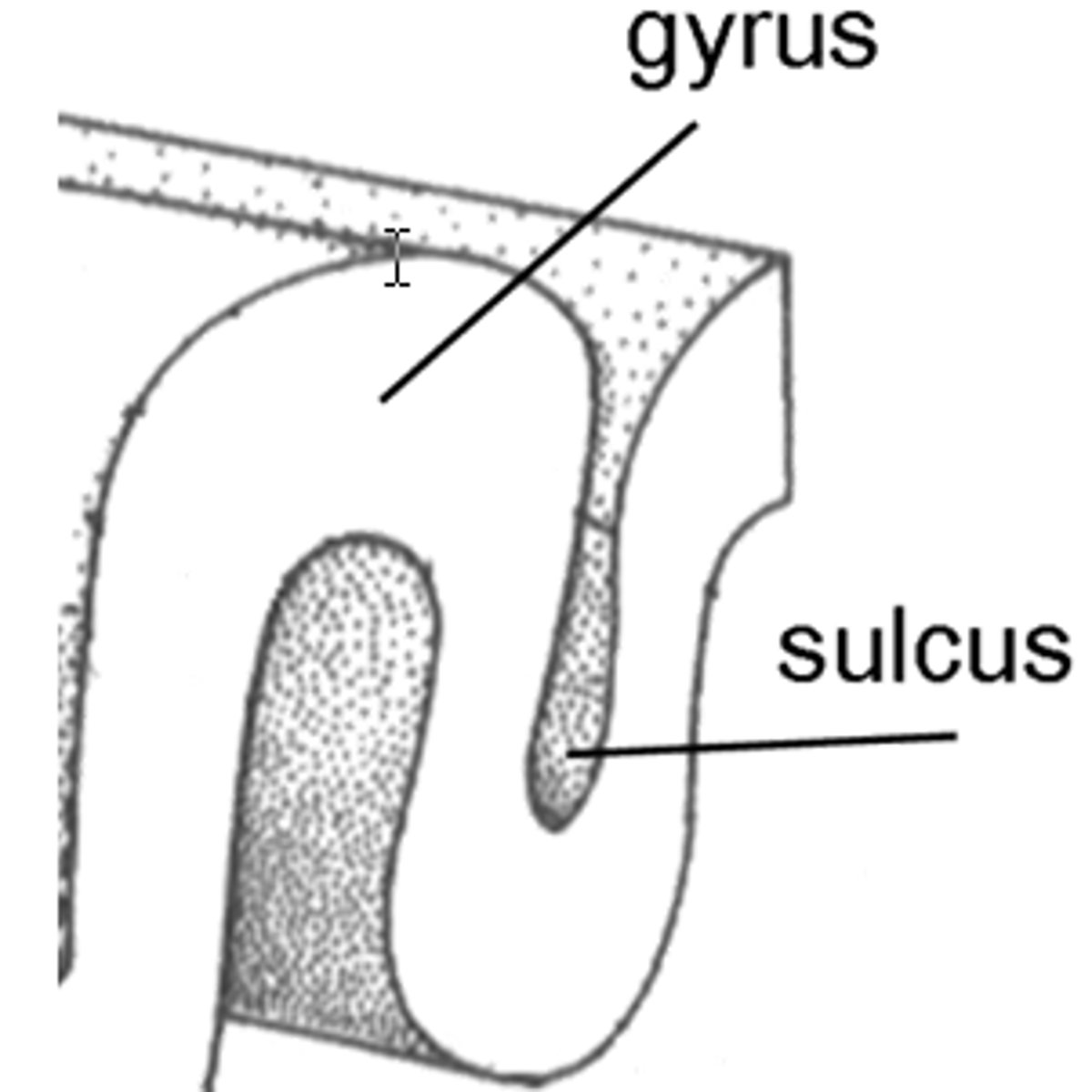
gyrus
Raised folds on the brain's surface that increase surface area for neural processing.
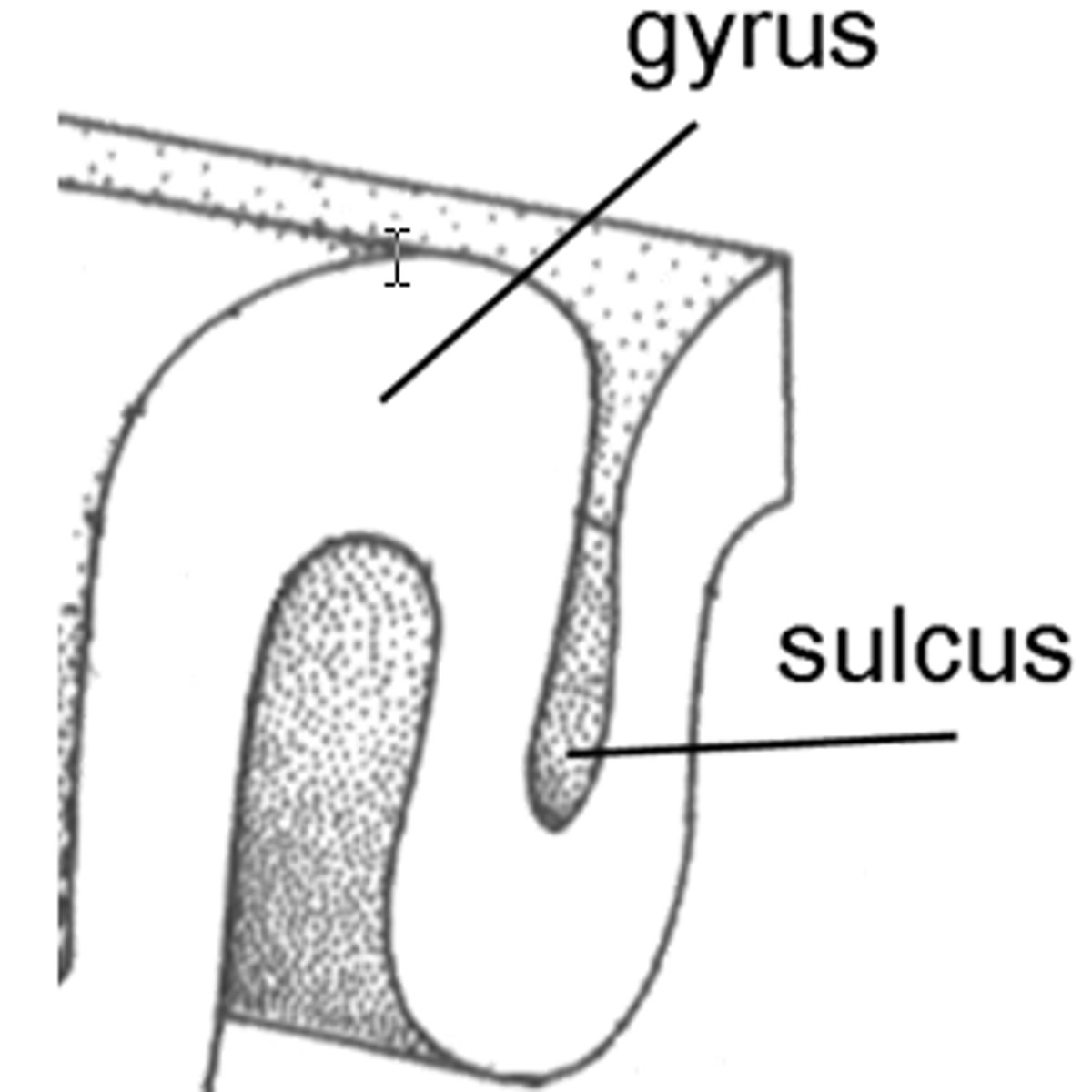
Dura Mater
Tough, outer protective layer of meninges.
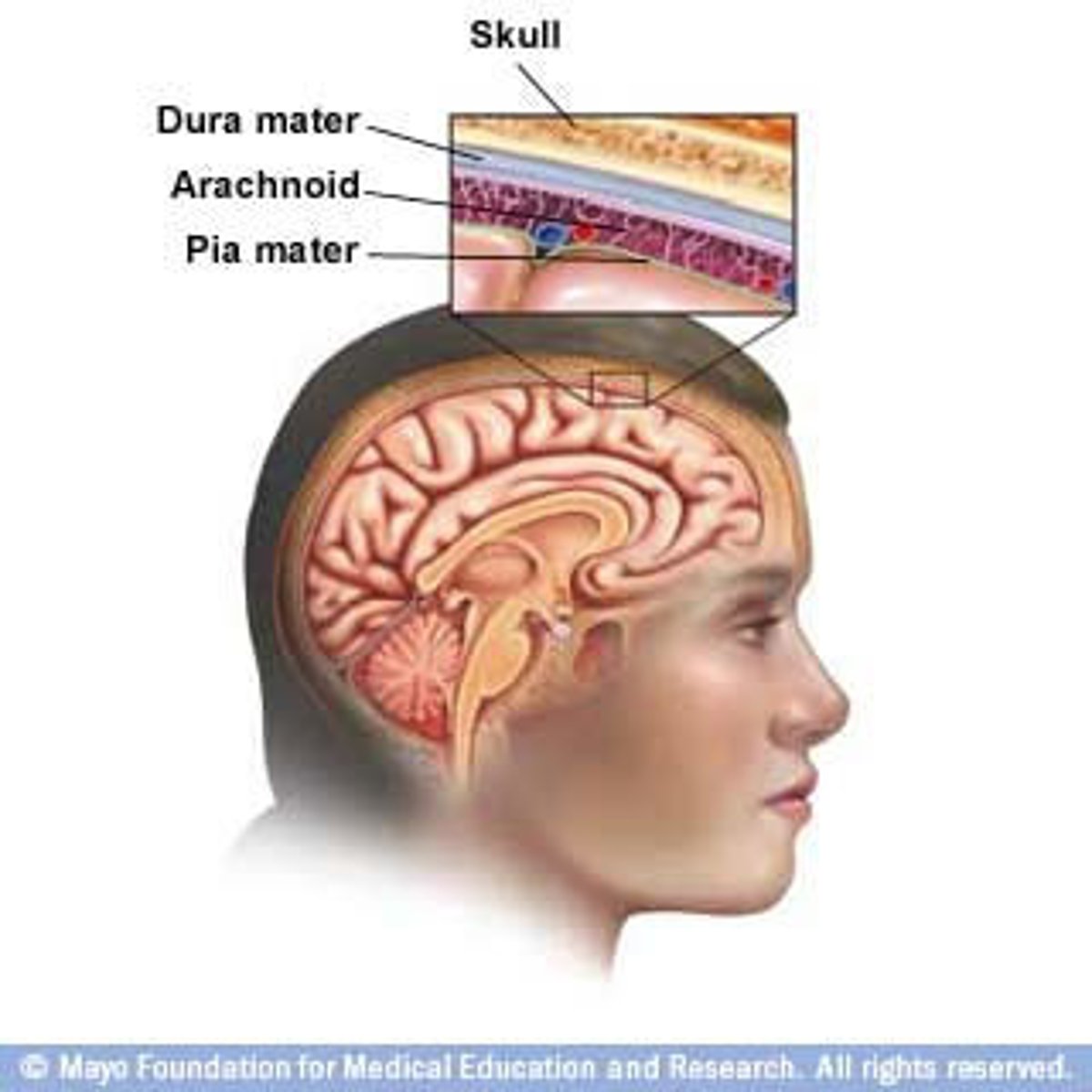
Arachnoid Mater
Middle, web-like meningeal layer containing cerebrospinal fluid.
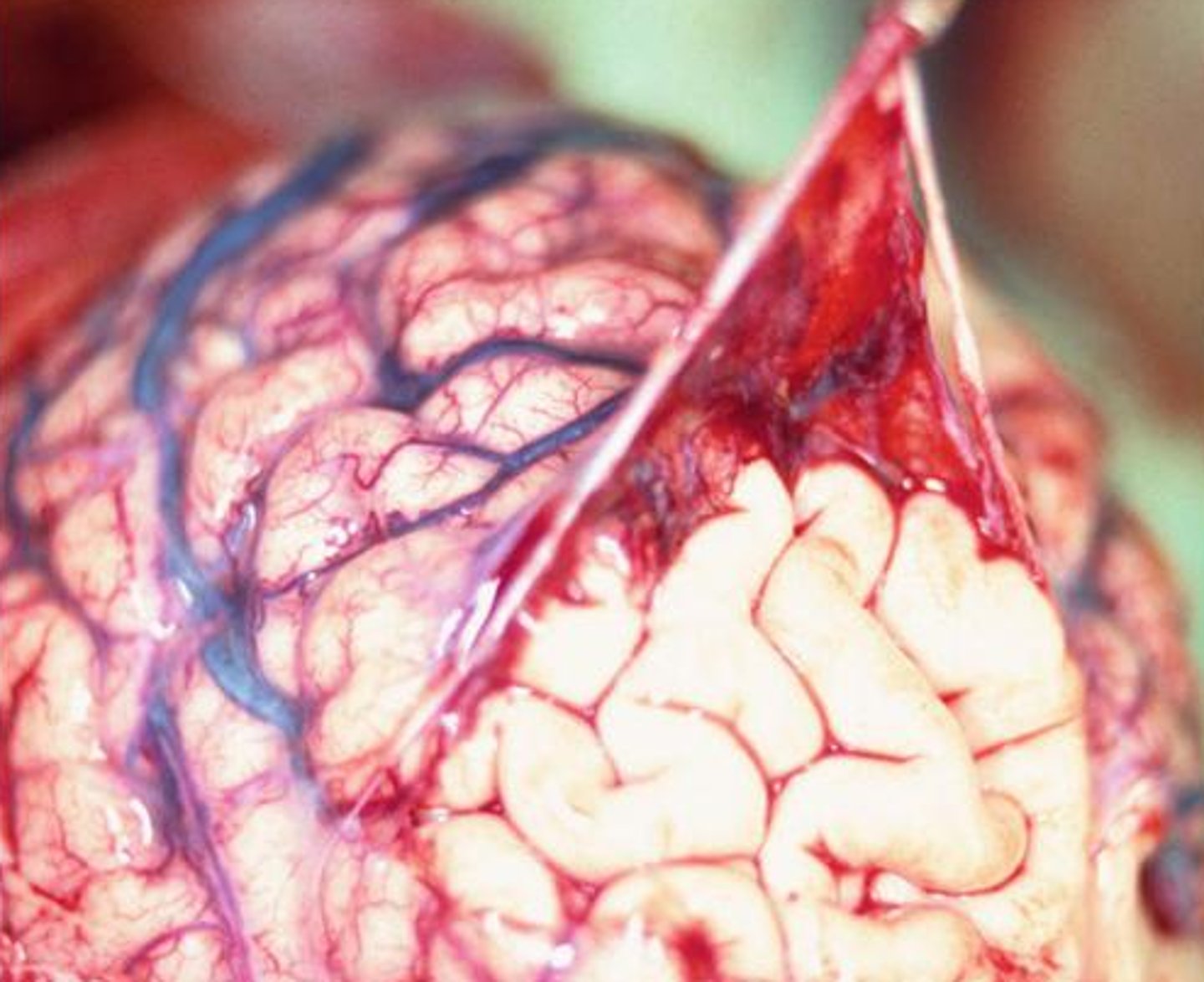
Pia Mater
Thin, inner layer that clings tightly to the surface of the brain and spinal cord.
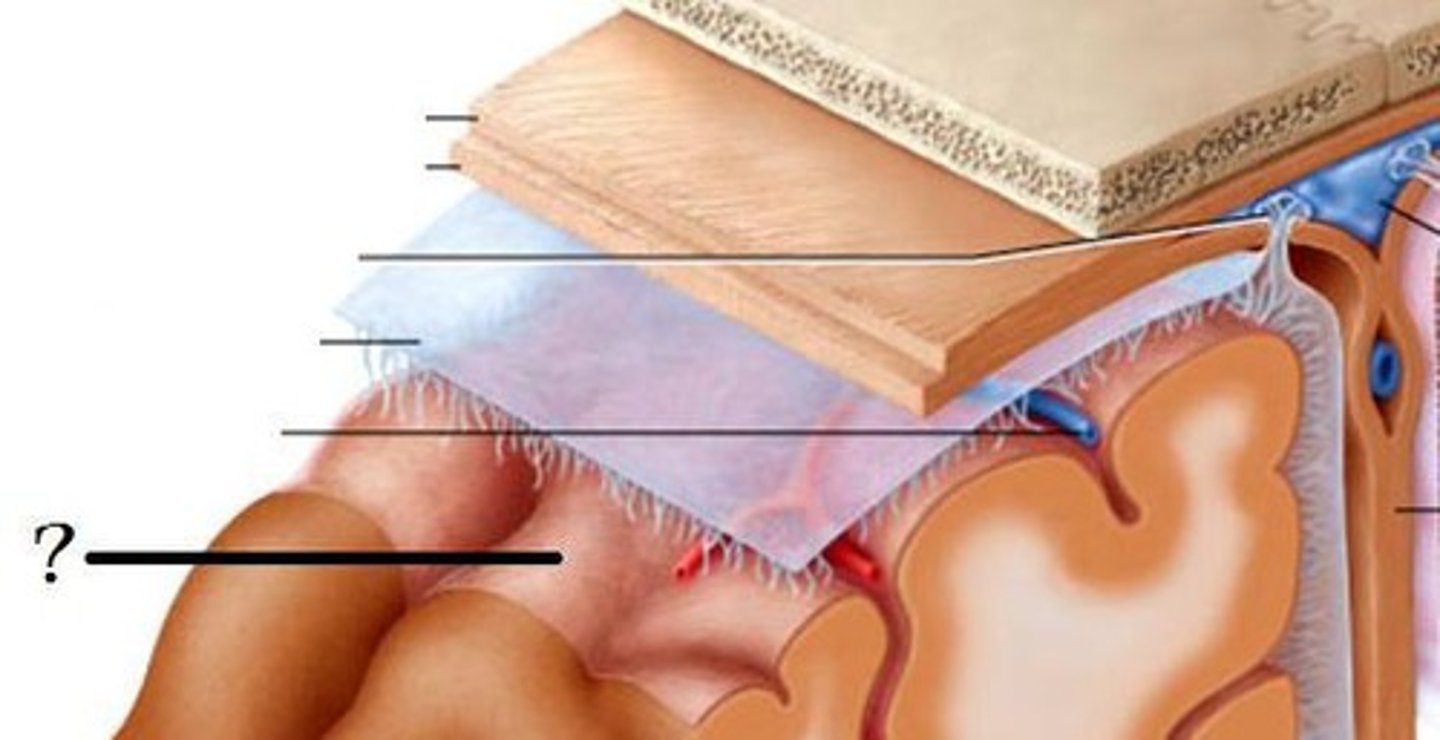
Fourth Ventricle
Cavity between the pons and cerebellum; filled with cerebrospinal fluid.
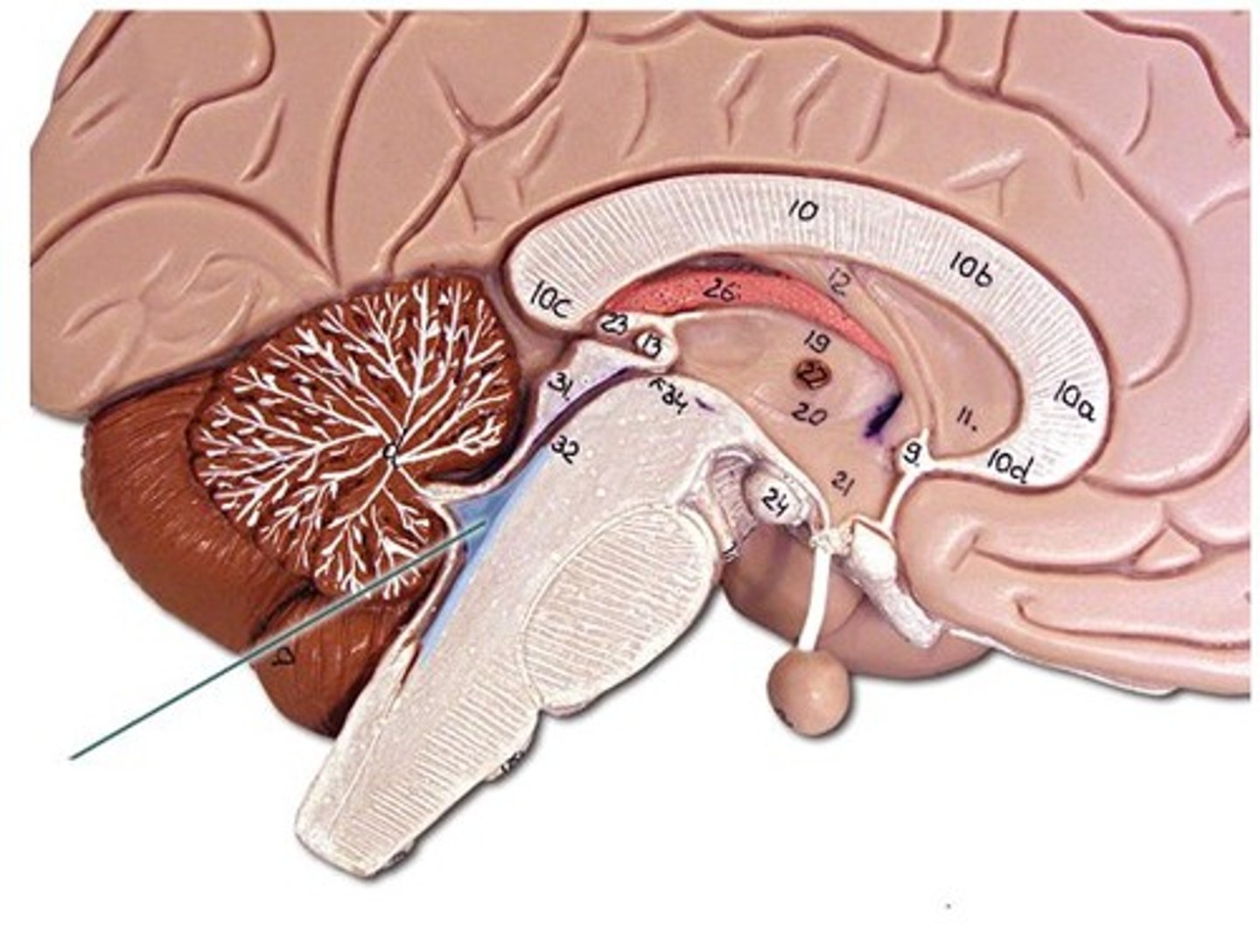
Fornix
Fiber tract arching below corpus callosum; connects hippocampus and hypothalamus.
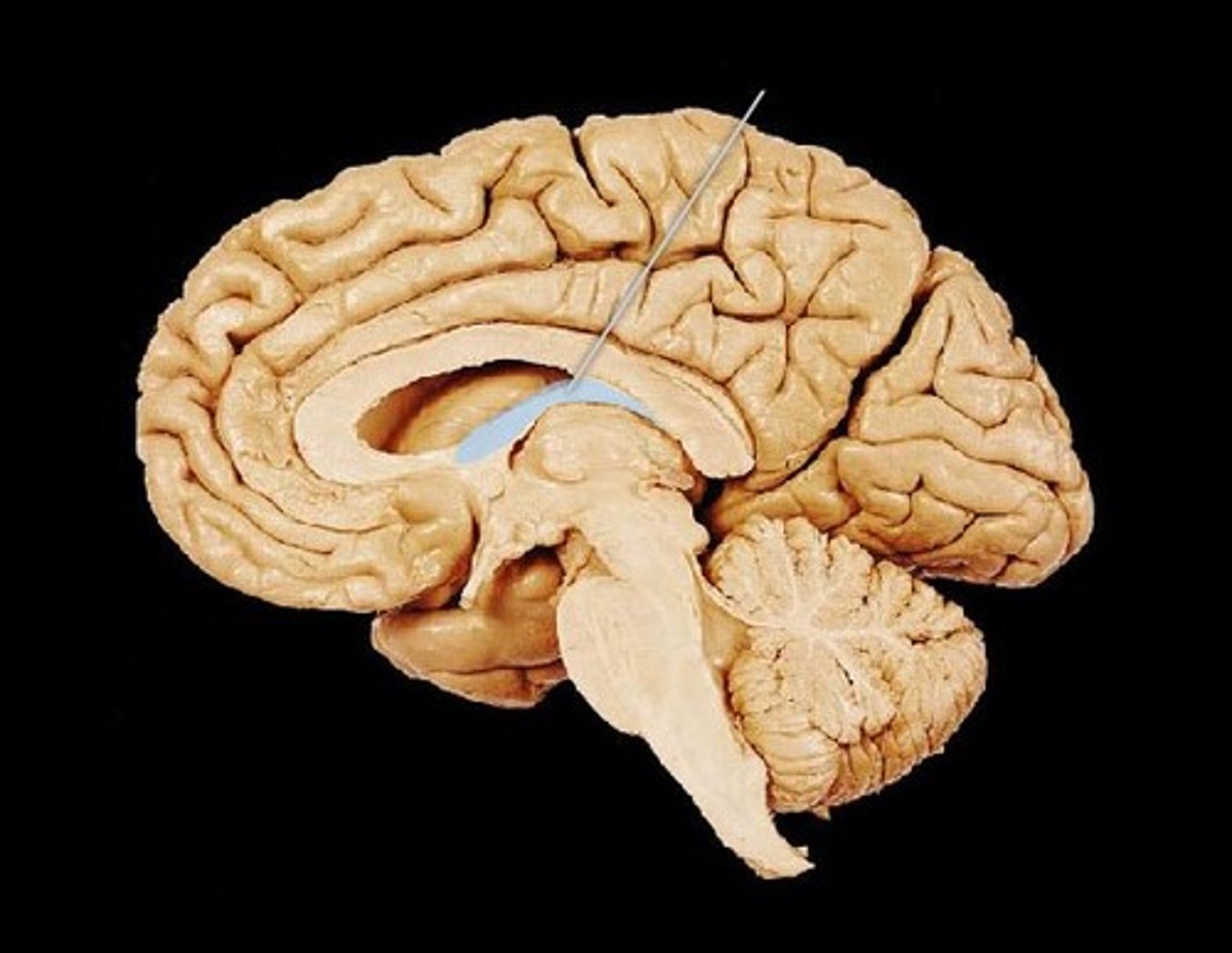
Pons
Bridge between medulla and midbrain; assists in regulating respiration.
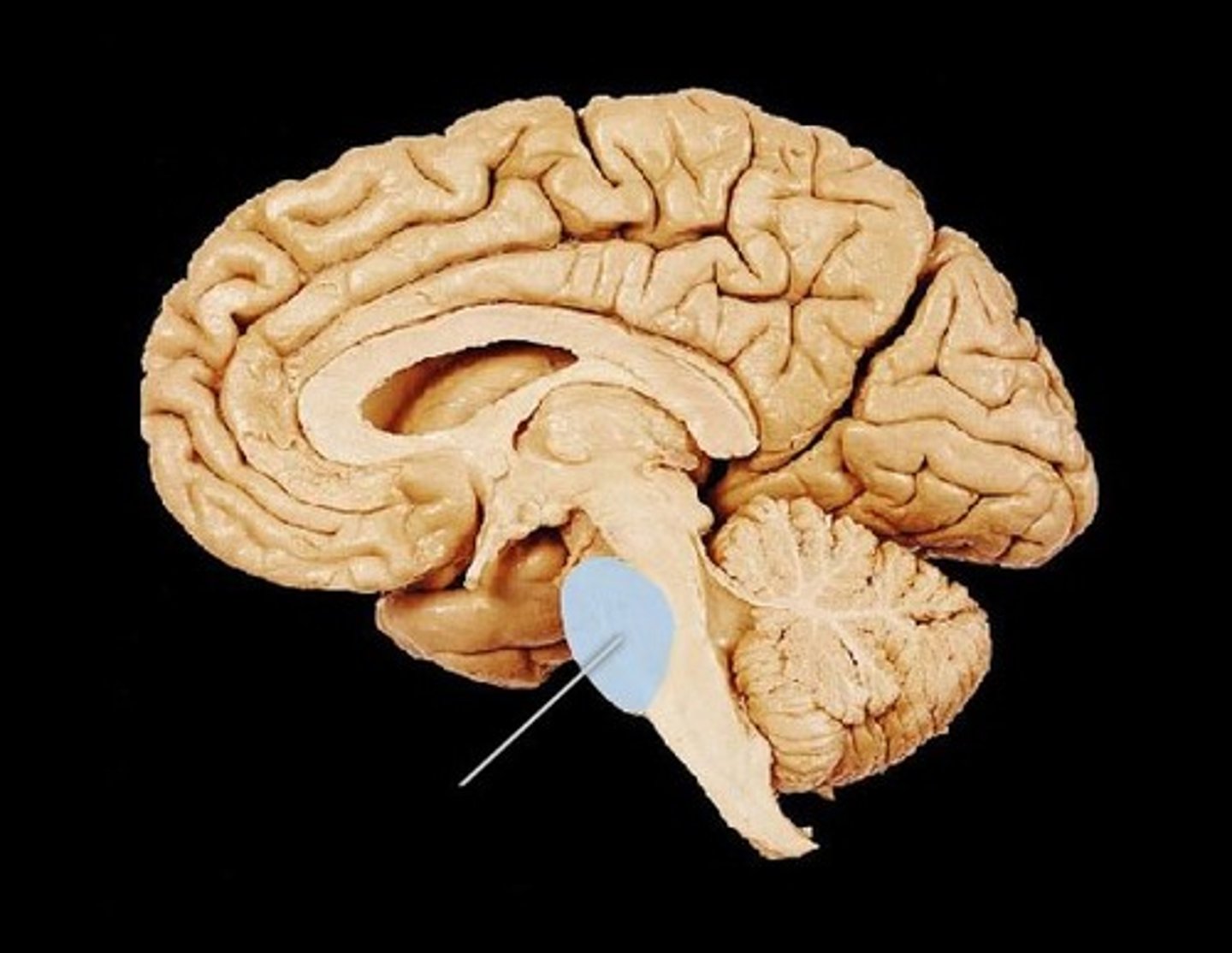
Choroid Plexus
Network of capillaries in ventricles that produce cerebrospinal fluid.
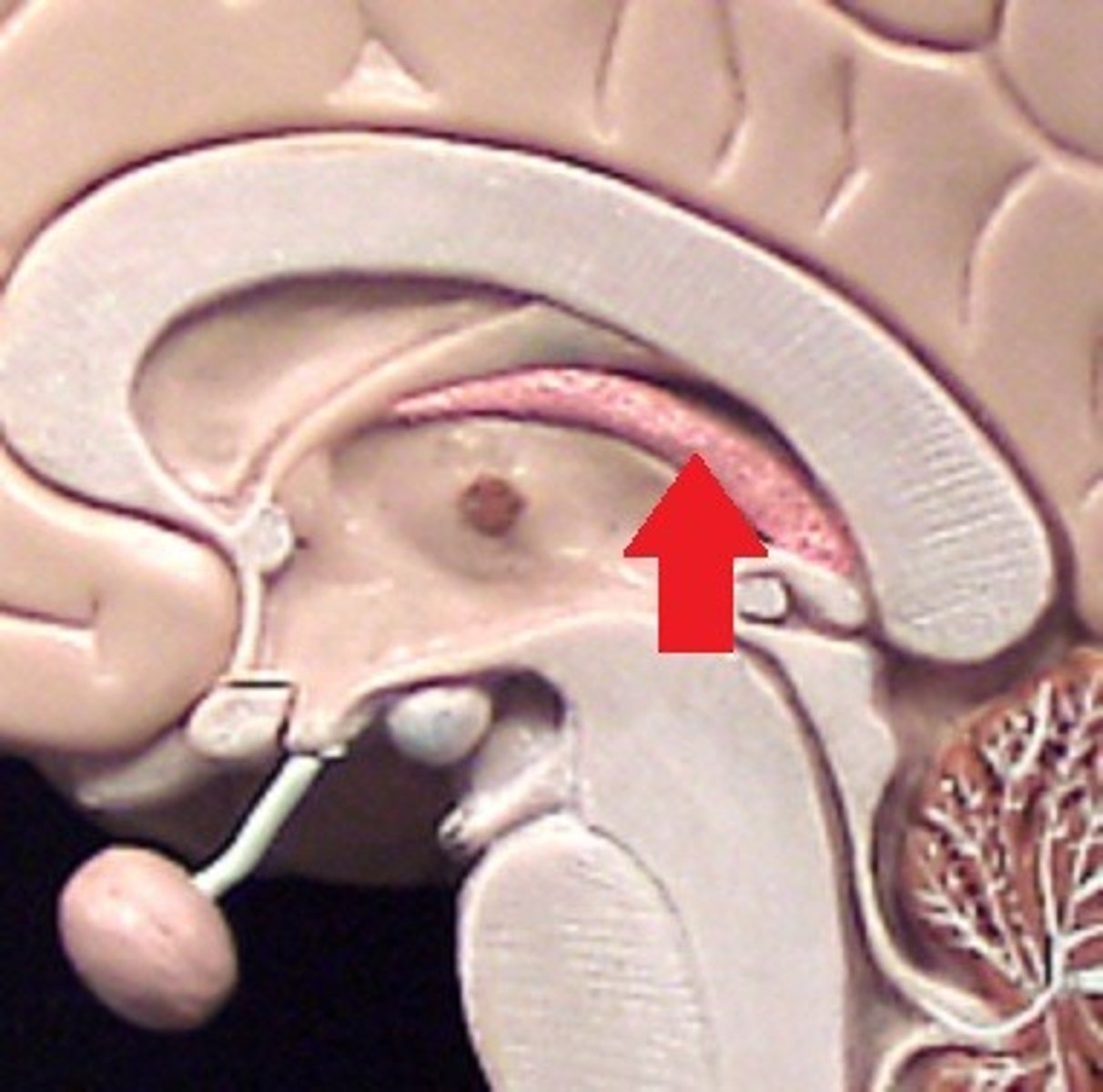
Intermediate Mass of Thalamus
Small bridge joining the two thalamic halves.
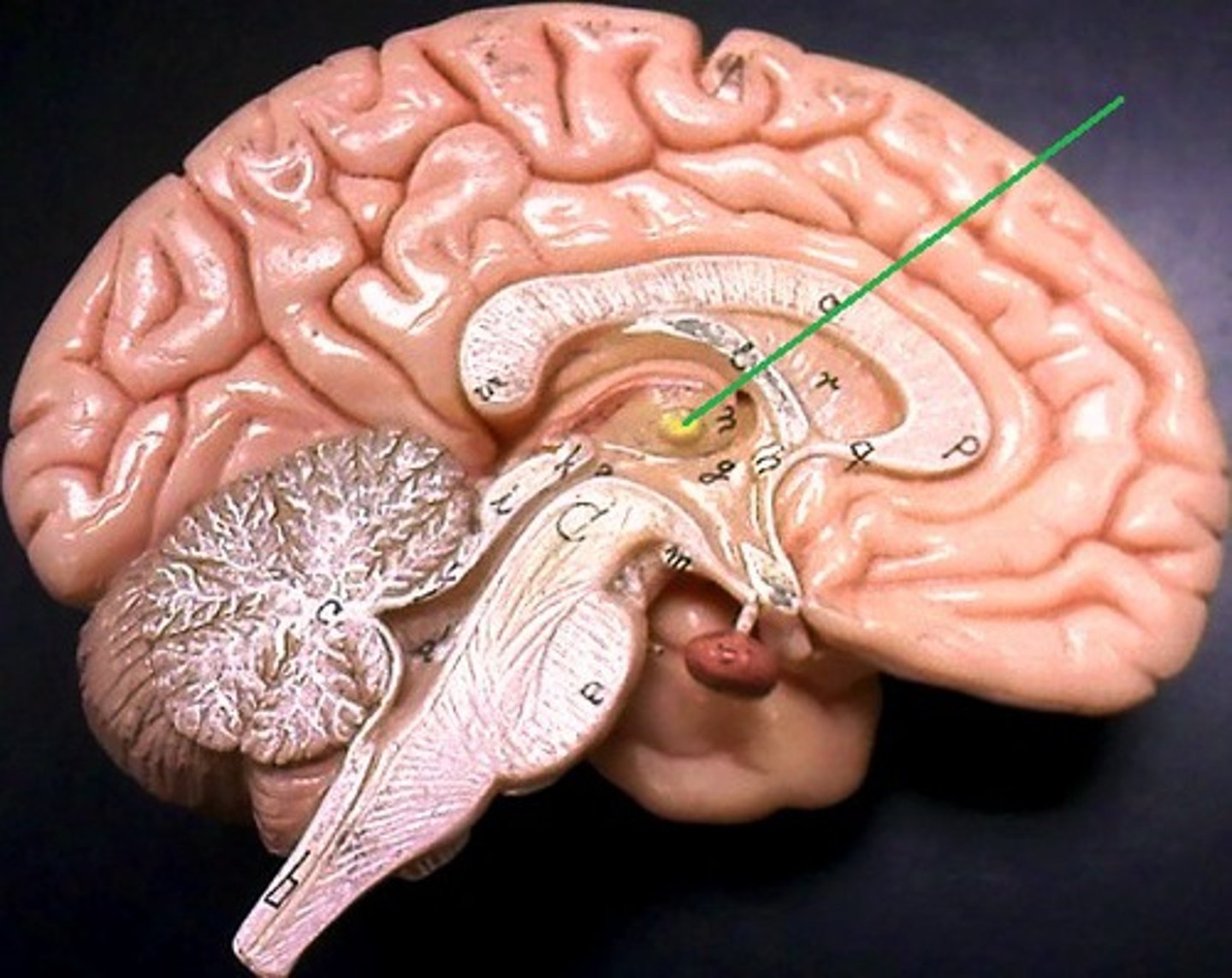
Corpus Callosum (Body, Genu, Rostrum, Splenium)
Large fiber tract connecting left and right cerebral hemispheres; Genu (front), Body (middle), Splenium (back), Rostrum (below front).
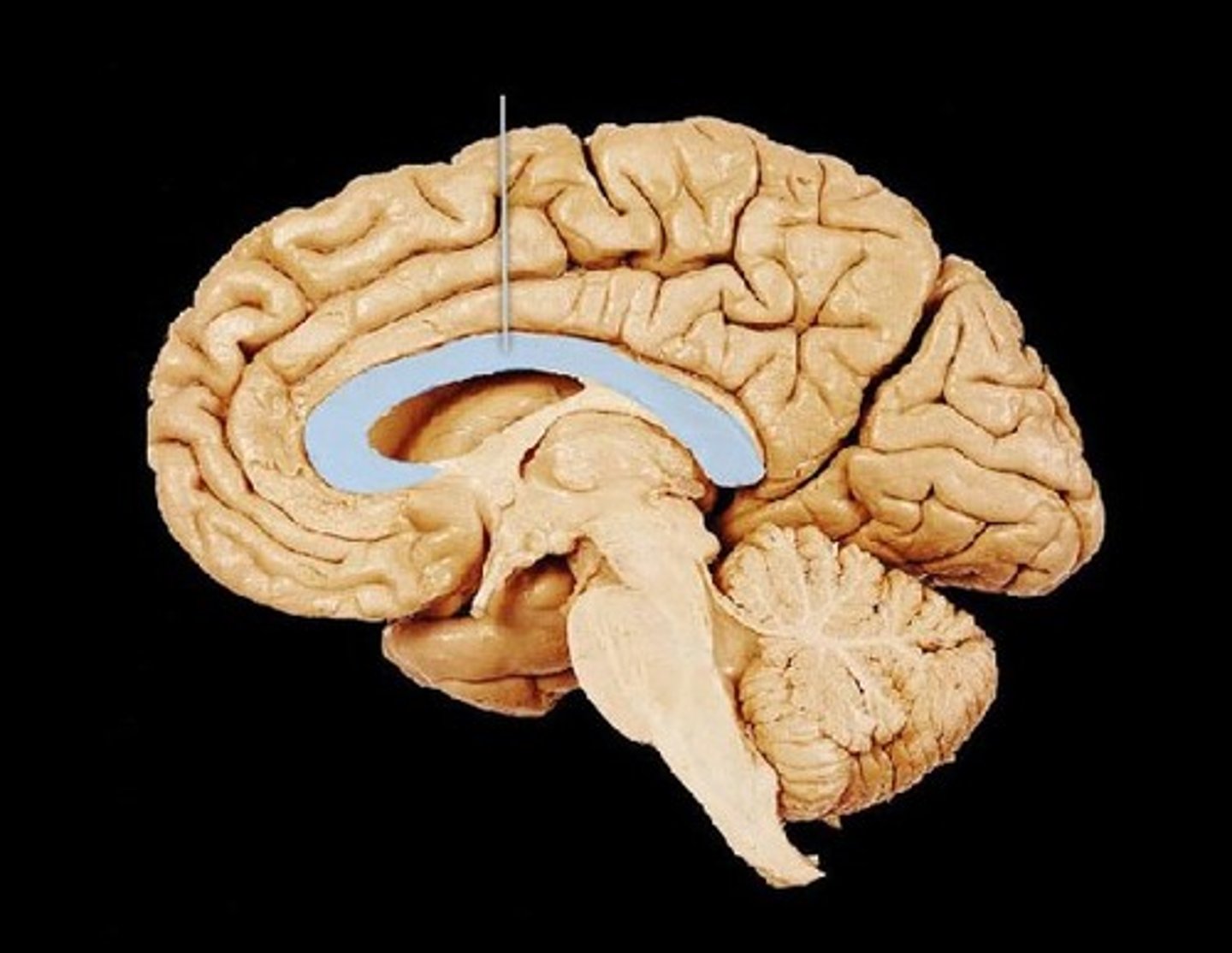
Frontal Lobe
Responsible for cognition, reasoning, planning, and voluntary motor function.
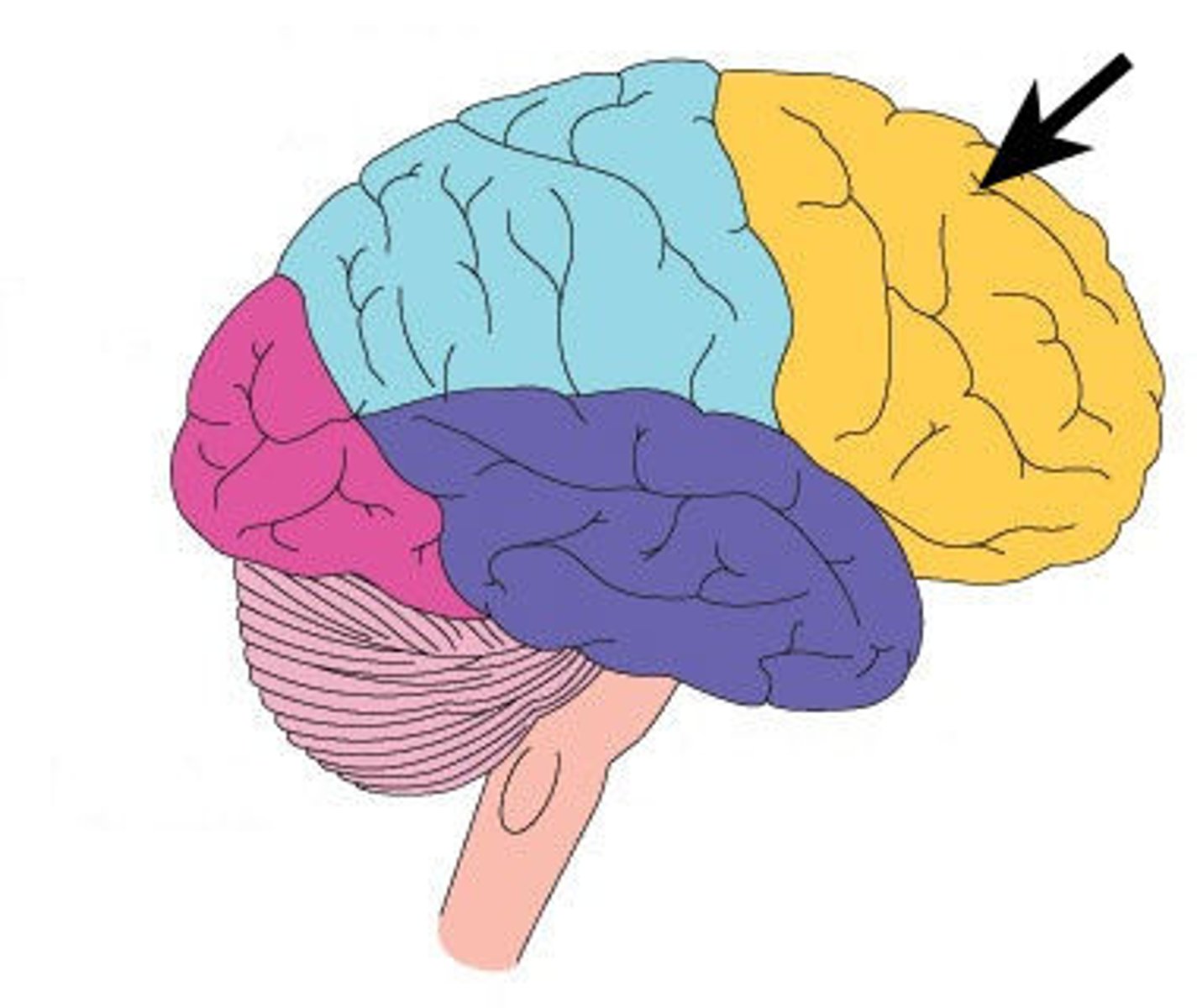
Parietal Lobe
Processes sensory input and body awareness; involved in movement coordination.
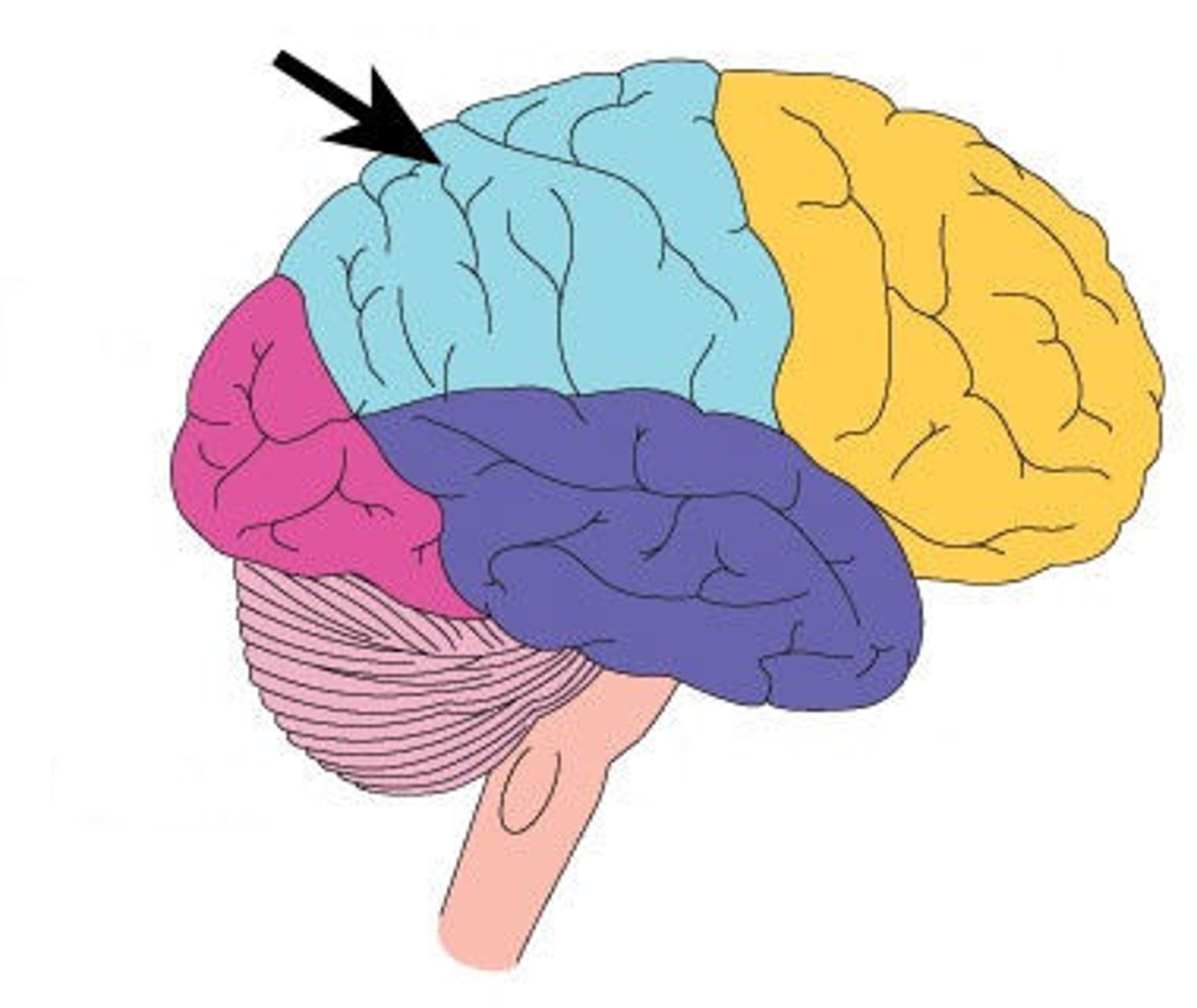
Temporal Lobe
Handles hearing, language comprehension, and memory.
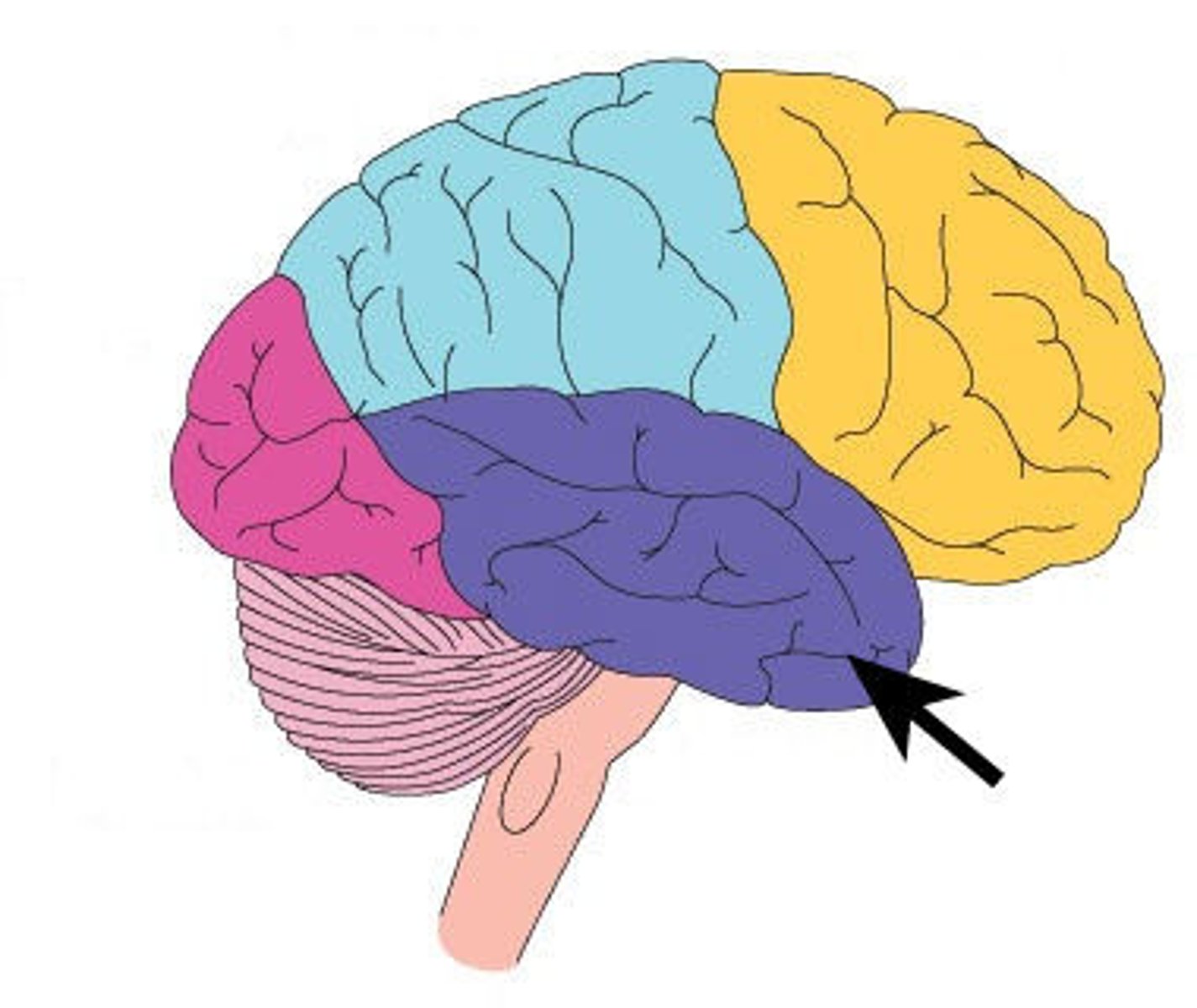
Occipital Lobe
Main visual processing center.
